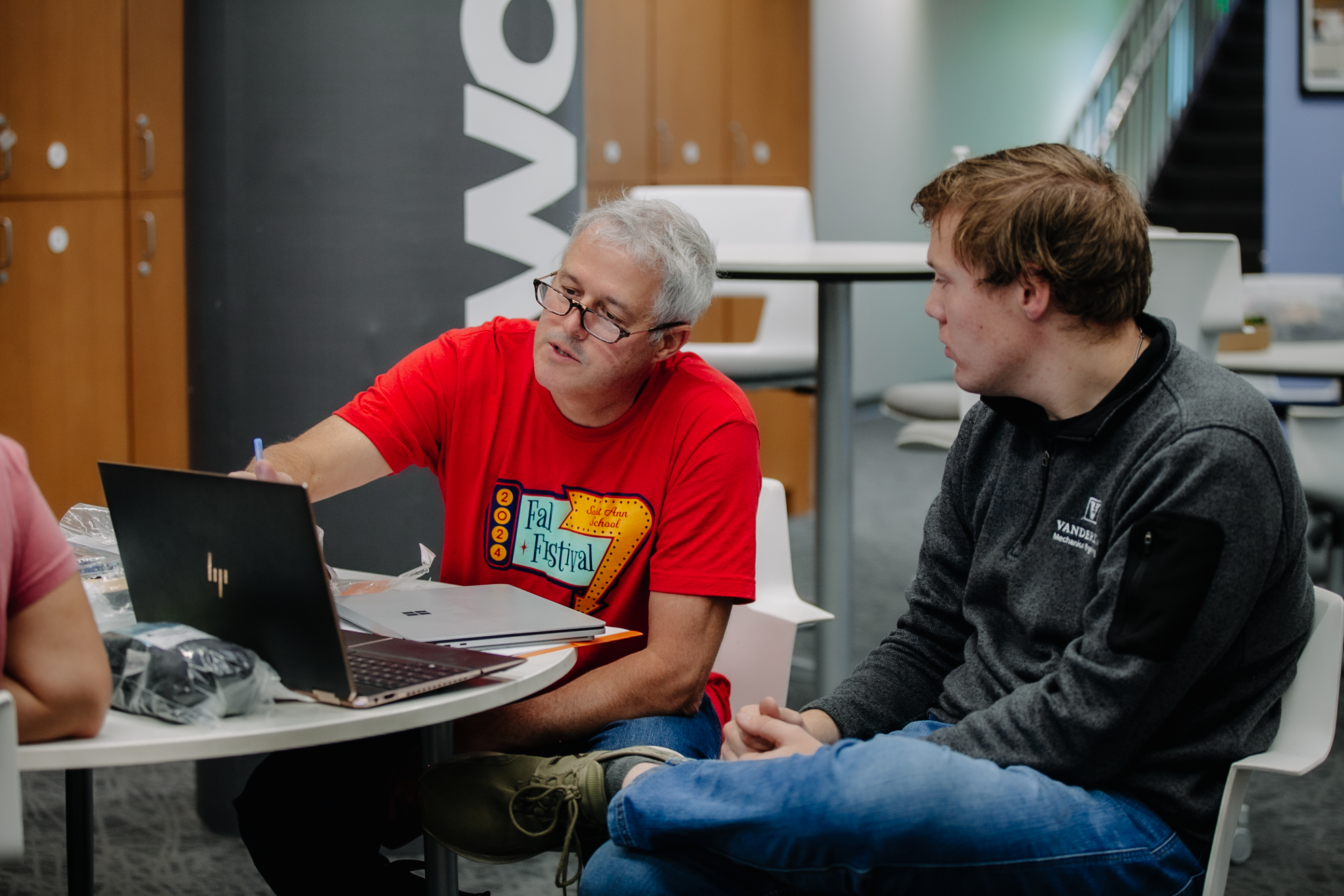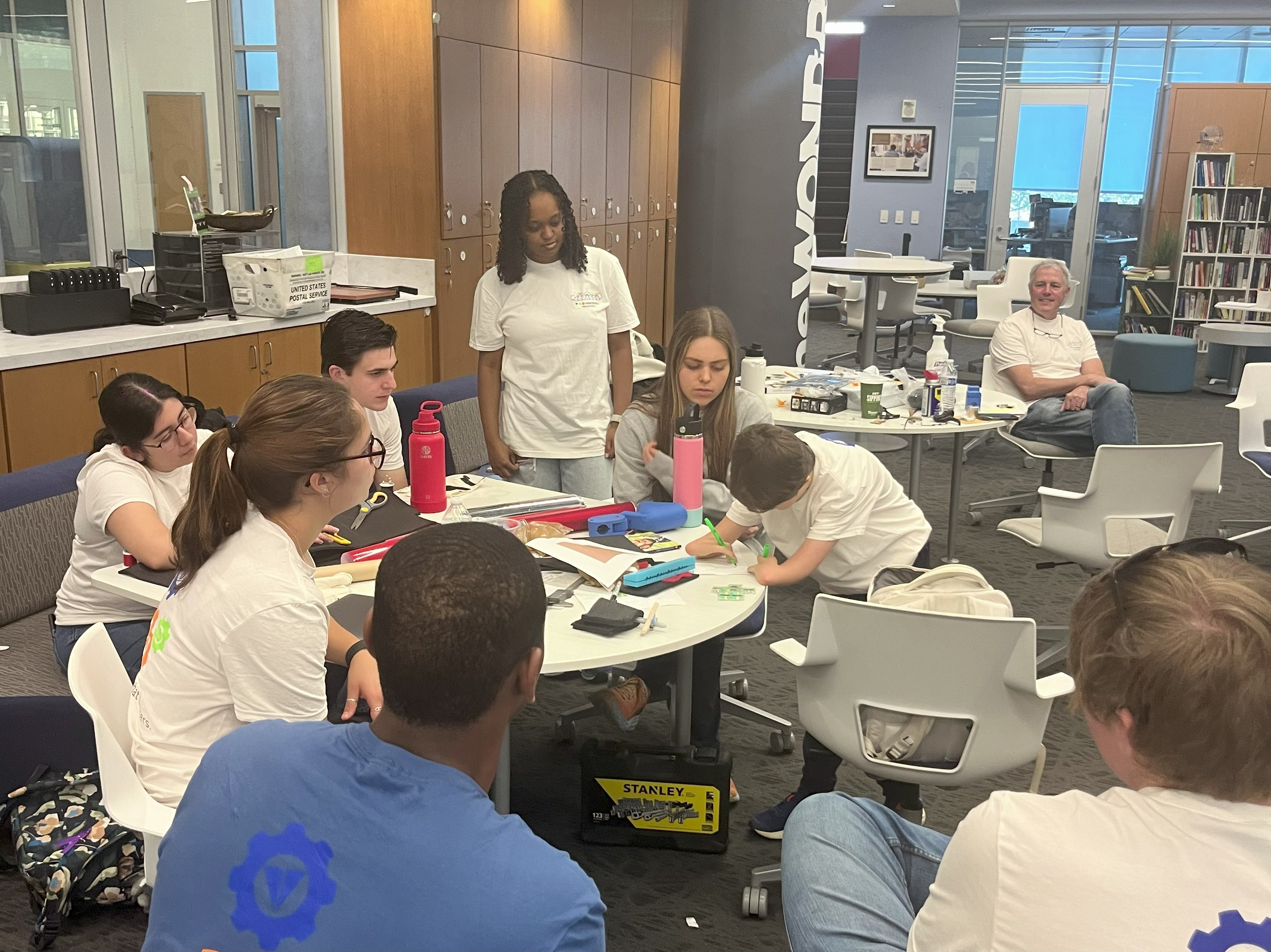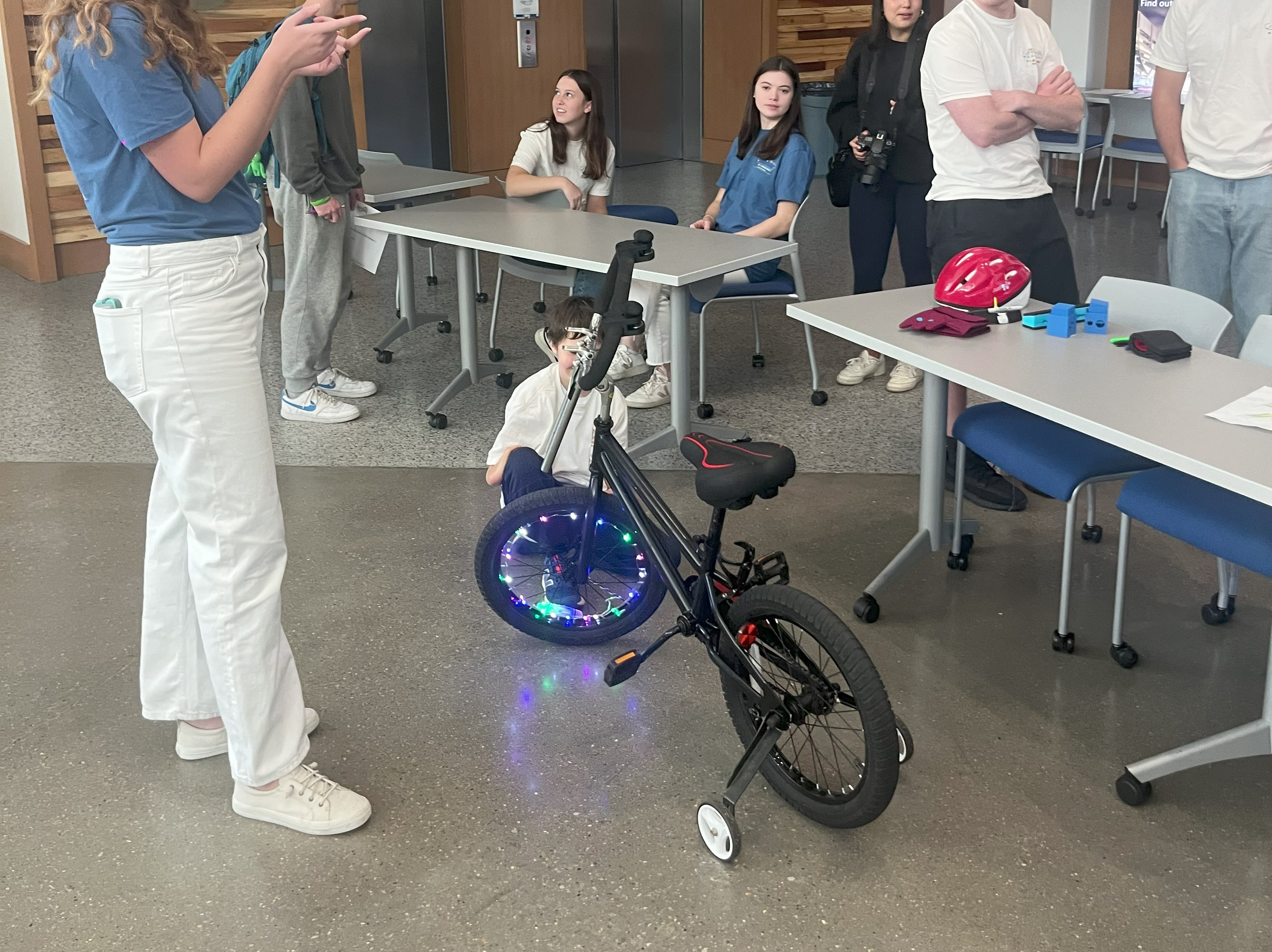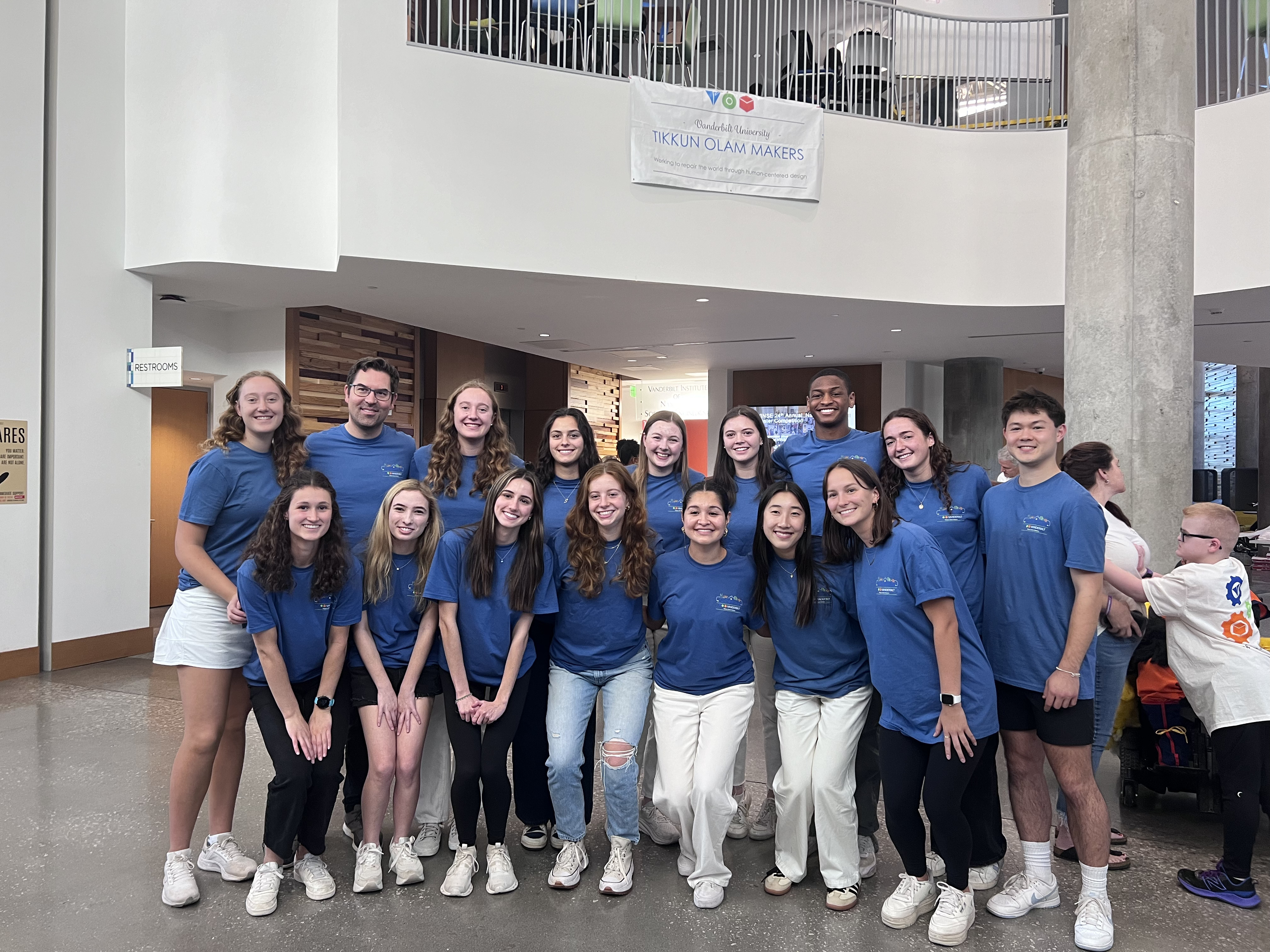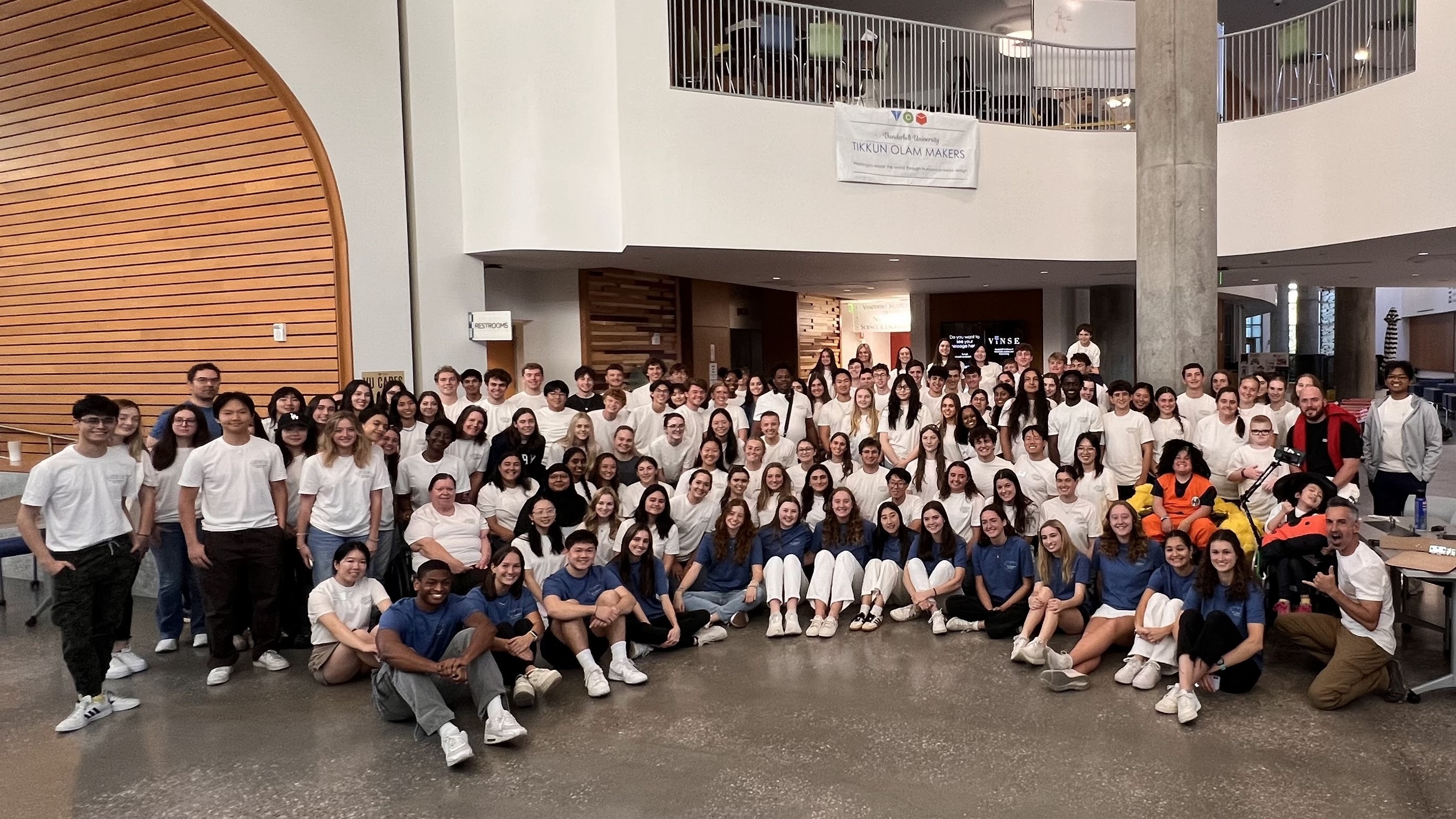2024 Makeathon
Date: October 25 - 27, 2024
About
This year, we hosted over 175 participants, including Makers, Need Knowers, and Team Leads, at our 7th annual Makeathon. We had 12 teams working throughout the weekend to prototype solutions for their Need Knowers. We also hosted Vanderbilt’s Chancellor Diermeier, three members of TOM Global, and the Hustler!
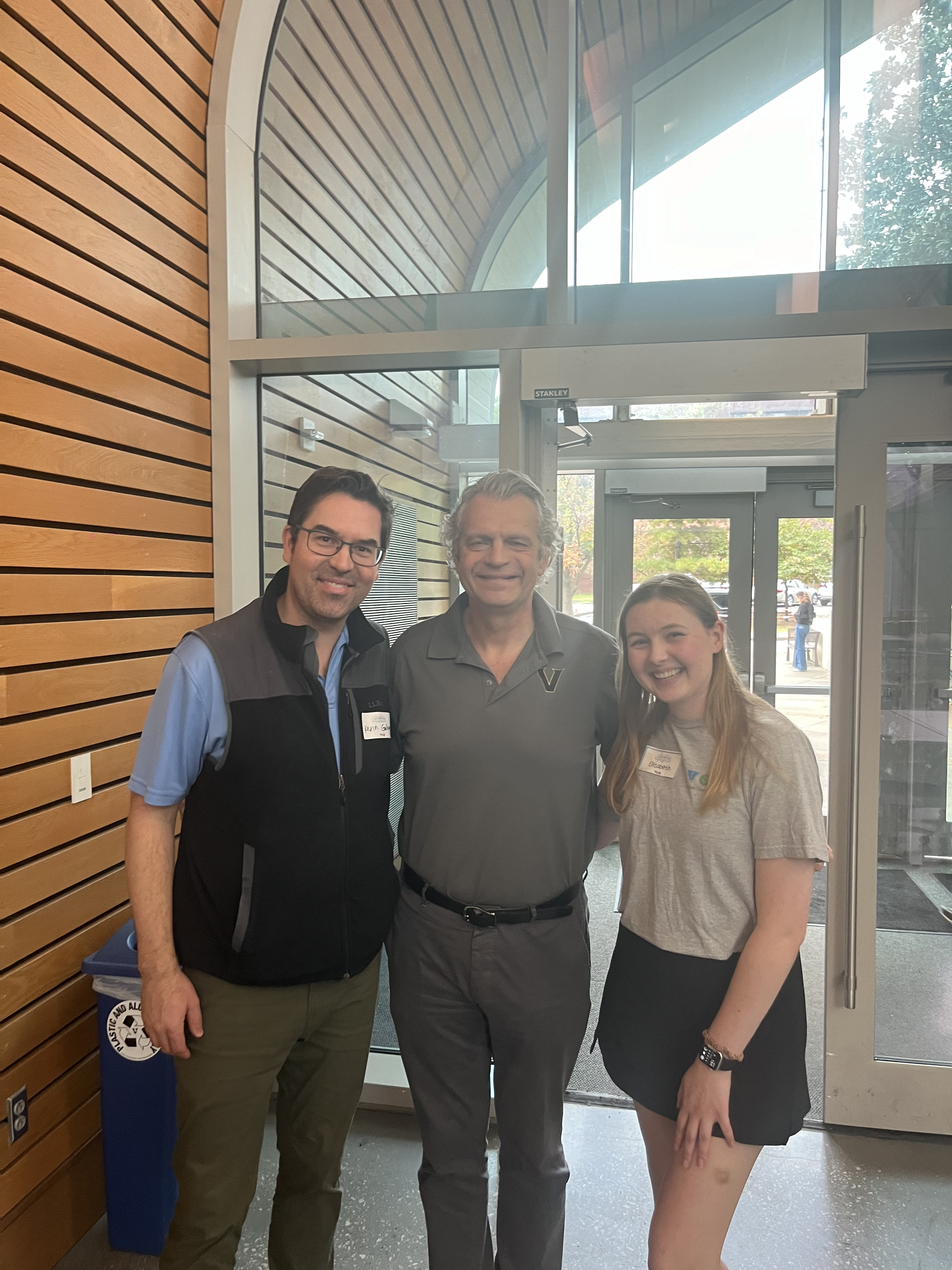
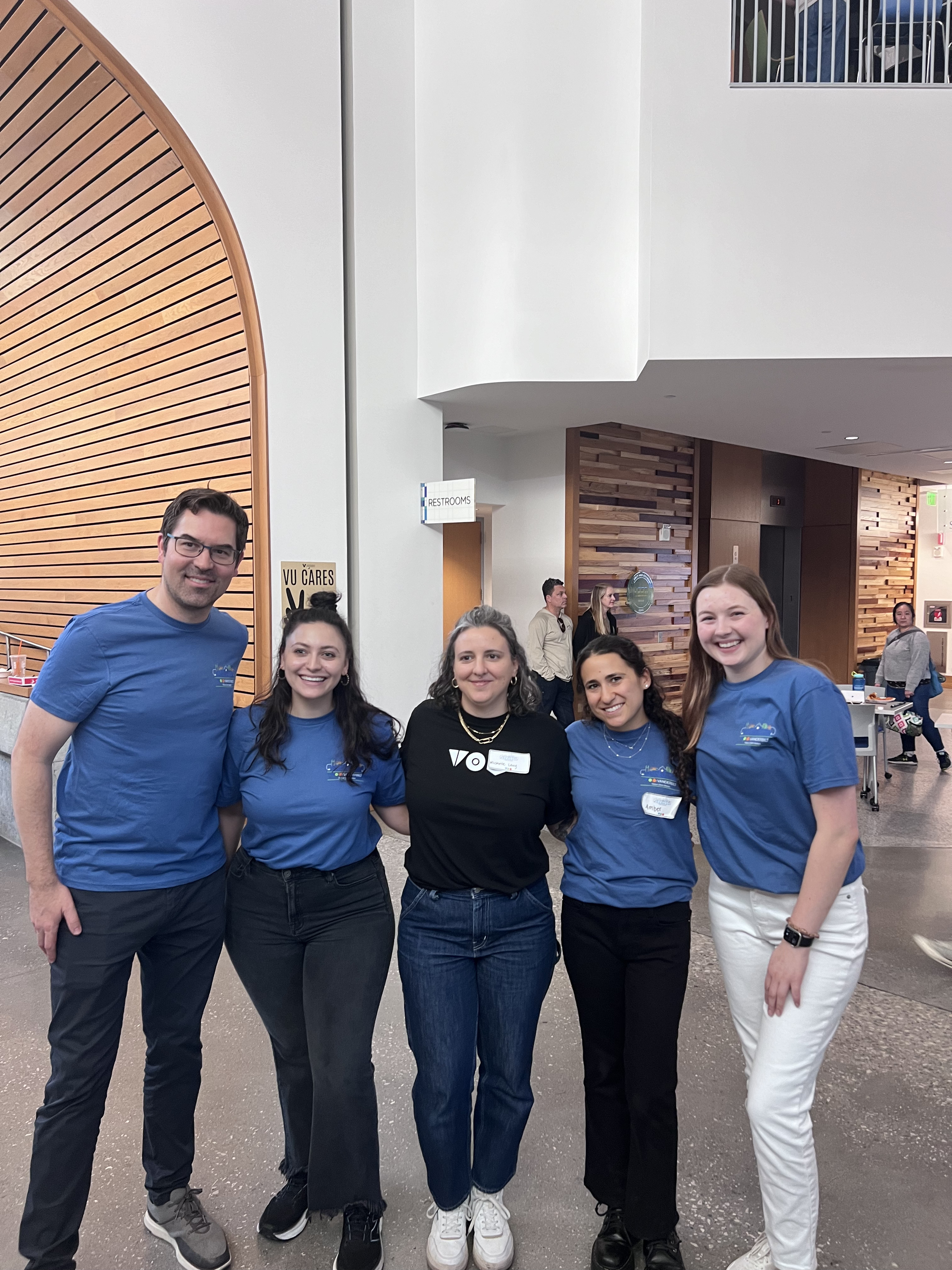
The weekend culminated in a showcase where each team was able to present about the work they completed. Read more about the 2024 Makeathon projects below!
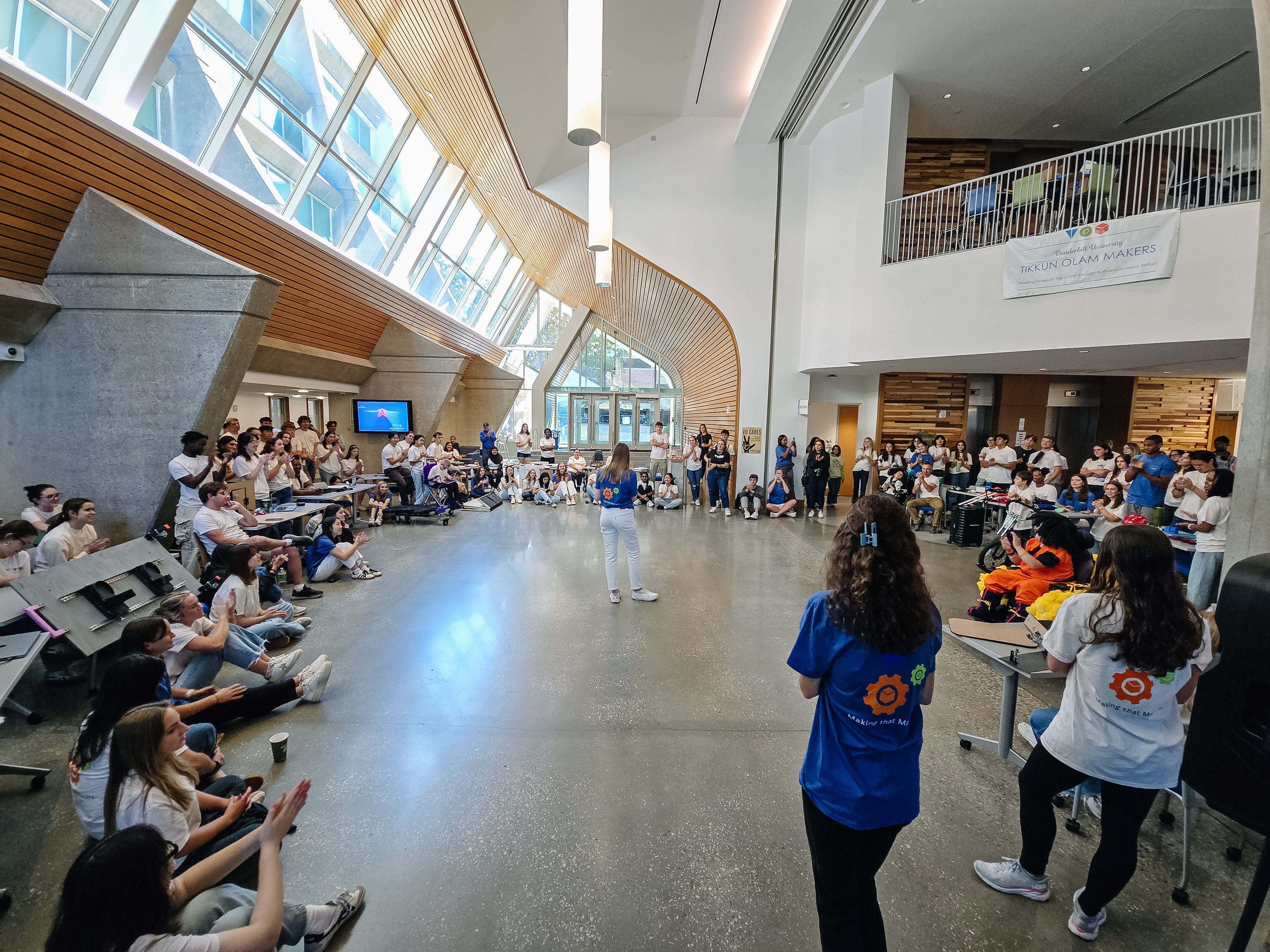
Projects
Team 1 - Jen & AbleVoices
Team Lead: Sophia Hooley
Jen is the founder of AbleVoices, an organization that teaches photography to individuals with disabilities as a means of self-expression. Her organization uses traditional point-and-shoot cameras, but not all of her participants have the fine motor skills needed to press the button. Jen needed a new method for those with limited fine motor skills to activate the camera’s button.
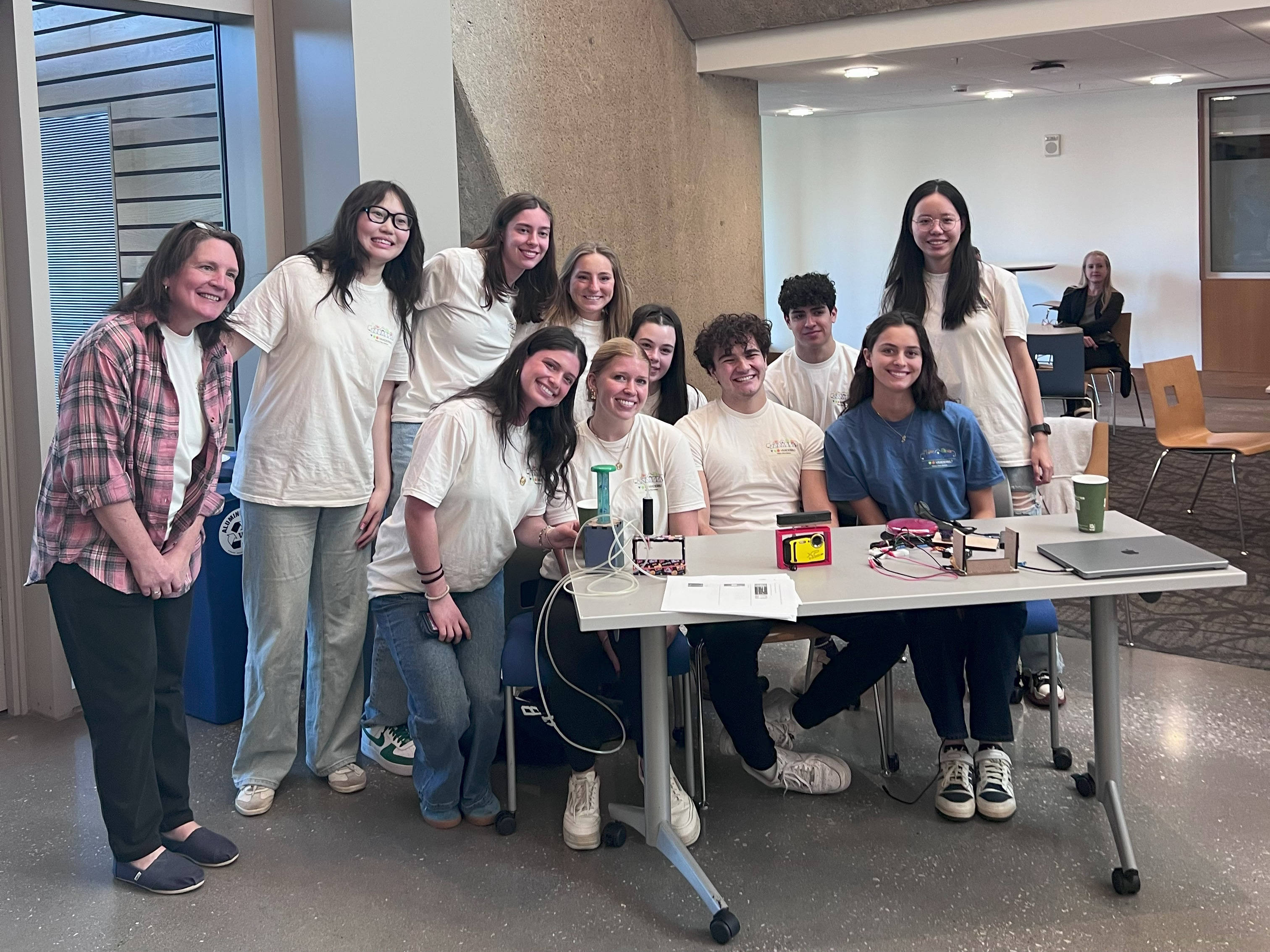
Team 1 created two different camera adaptations. One adaptation featured a larger surface area for the participants to press the camera button, and the other adaptation featured an external button wired to a servo motor that clicked the camera button. This project was continued into the 2025 Global Innovation Challenge. Its documentation can be found here: Camera Adaptation Documentation.

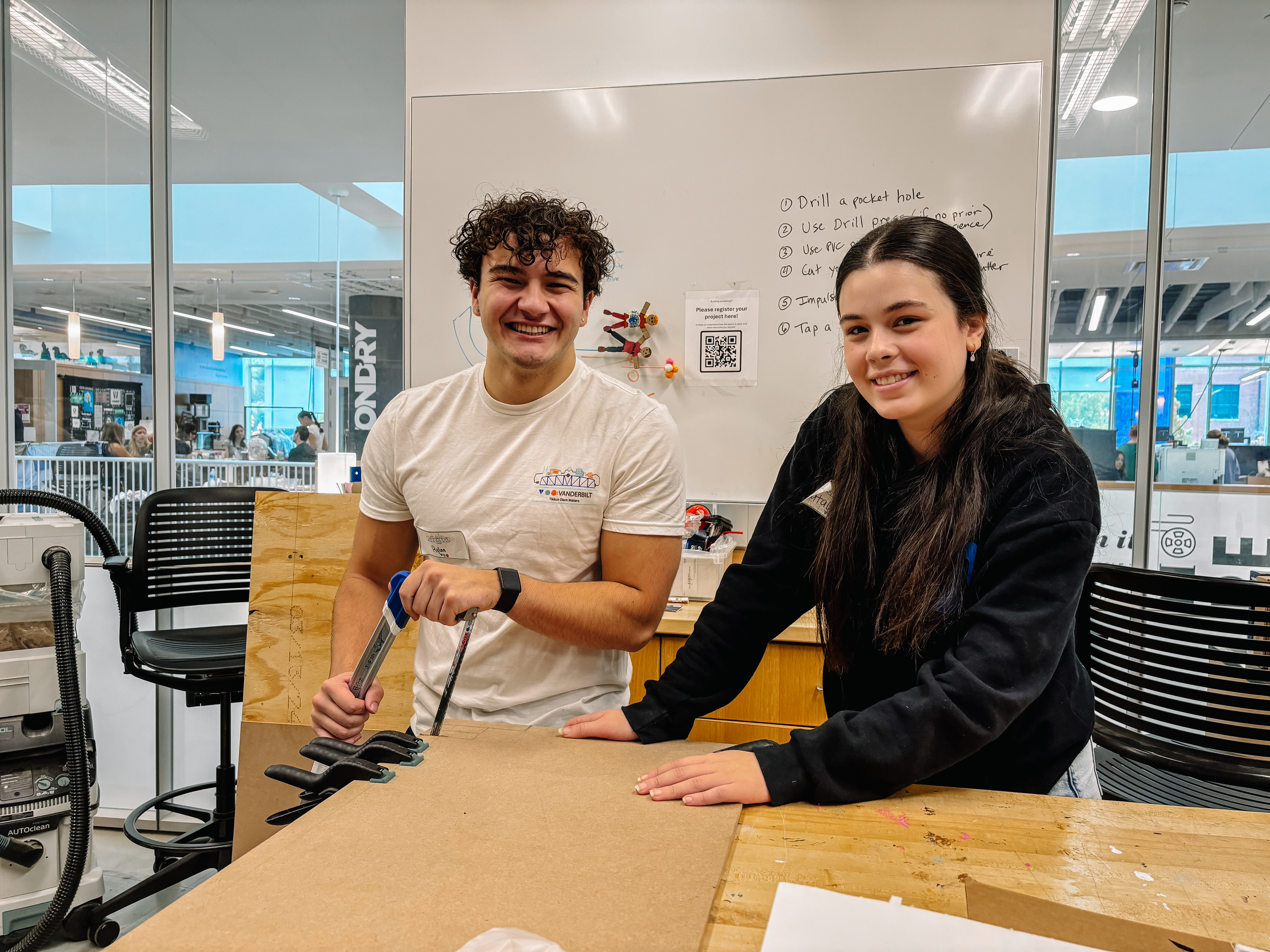
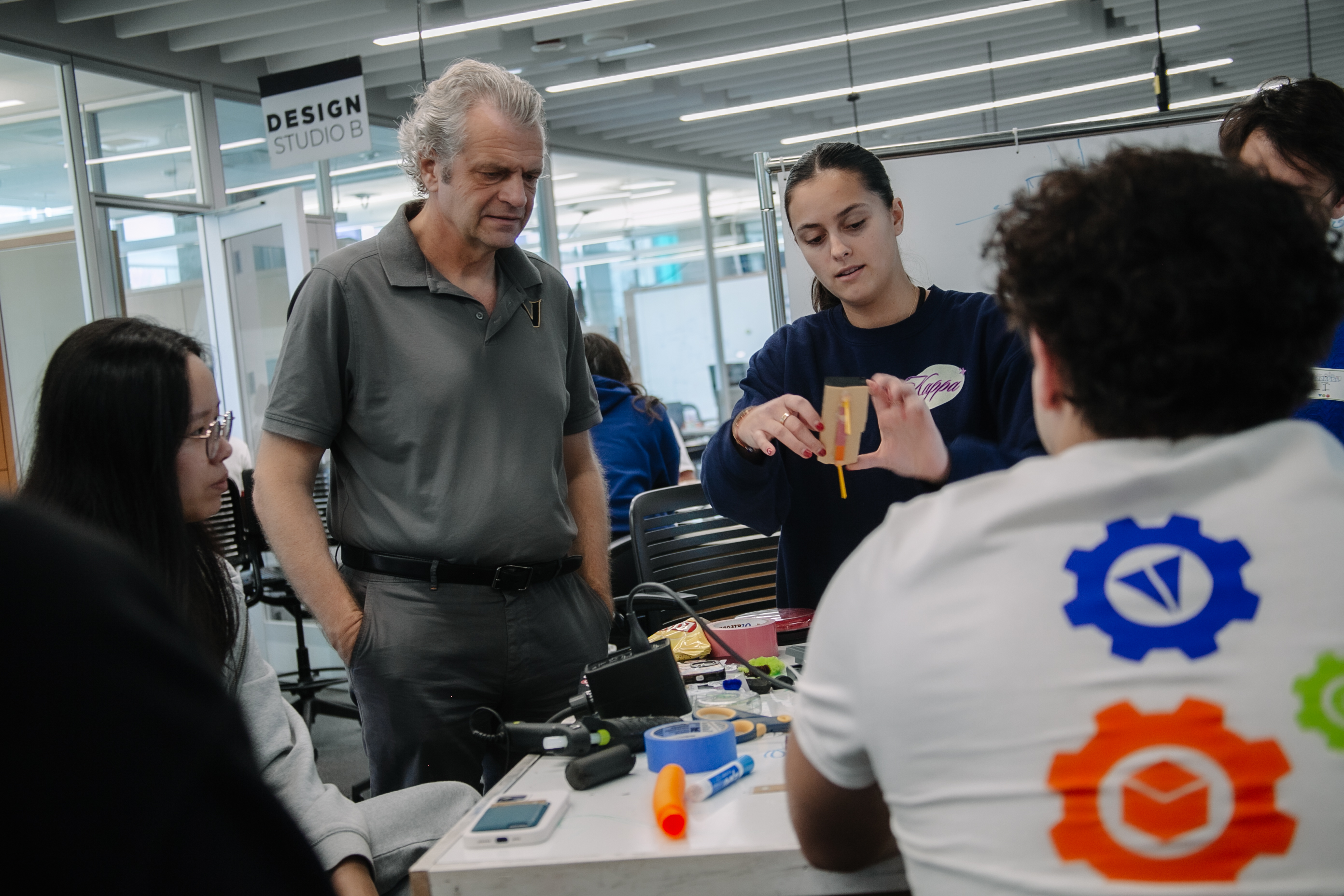
Team 2 - Robby
Team Lead: Megan Wang
Robby, a Vandy alum and returner from the 2023 Makeathon, was in a car accident in 2022 that left him with a C4/C5 spinal cord injury. He has little movement below his mid-shoulders. He works remotely full-time, and if he’s on a meeting in his bedroom, he doesn’t have an easy way of closing and locking the door independently. Robby needed an automated way of opening, closing, locking, and unlocking his bedroom door.
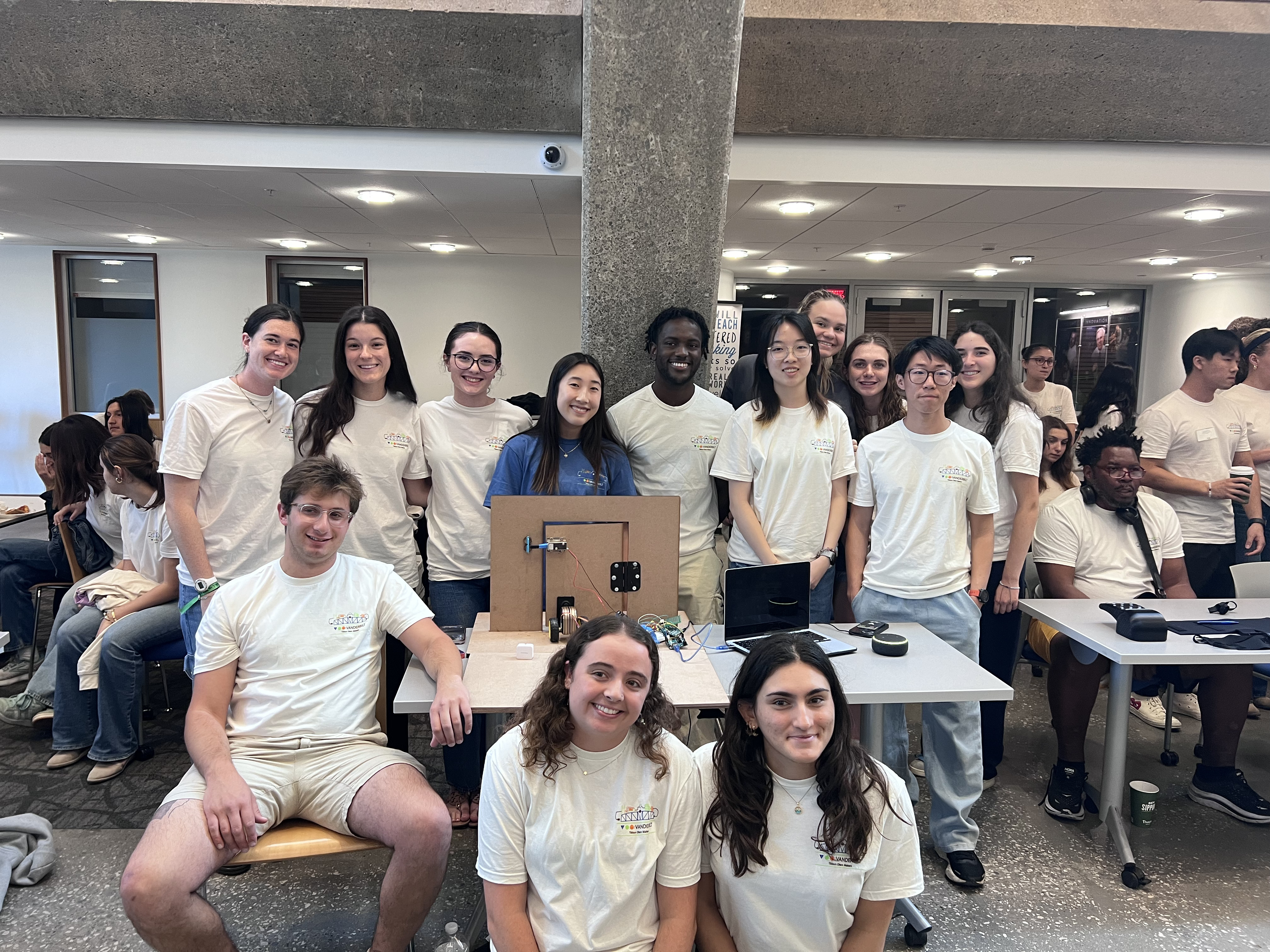
Team 2 prototyped an automatic door controller that could be controlled by Robby’s Amazon Alexa in his bedroom. This project was continued into the 2025 Global Innovation Challenge. Its documentation can be found here: Automatic Door Control Documentation.
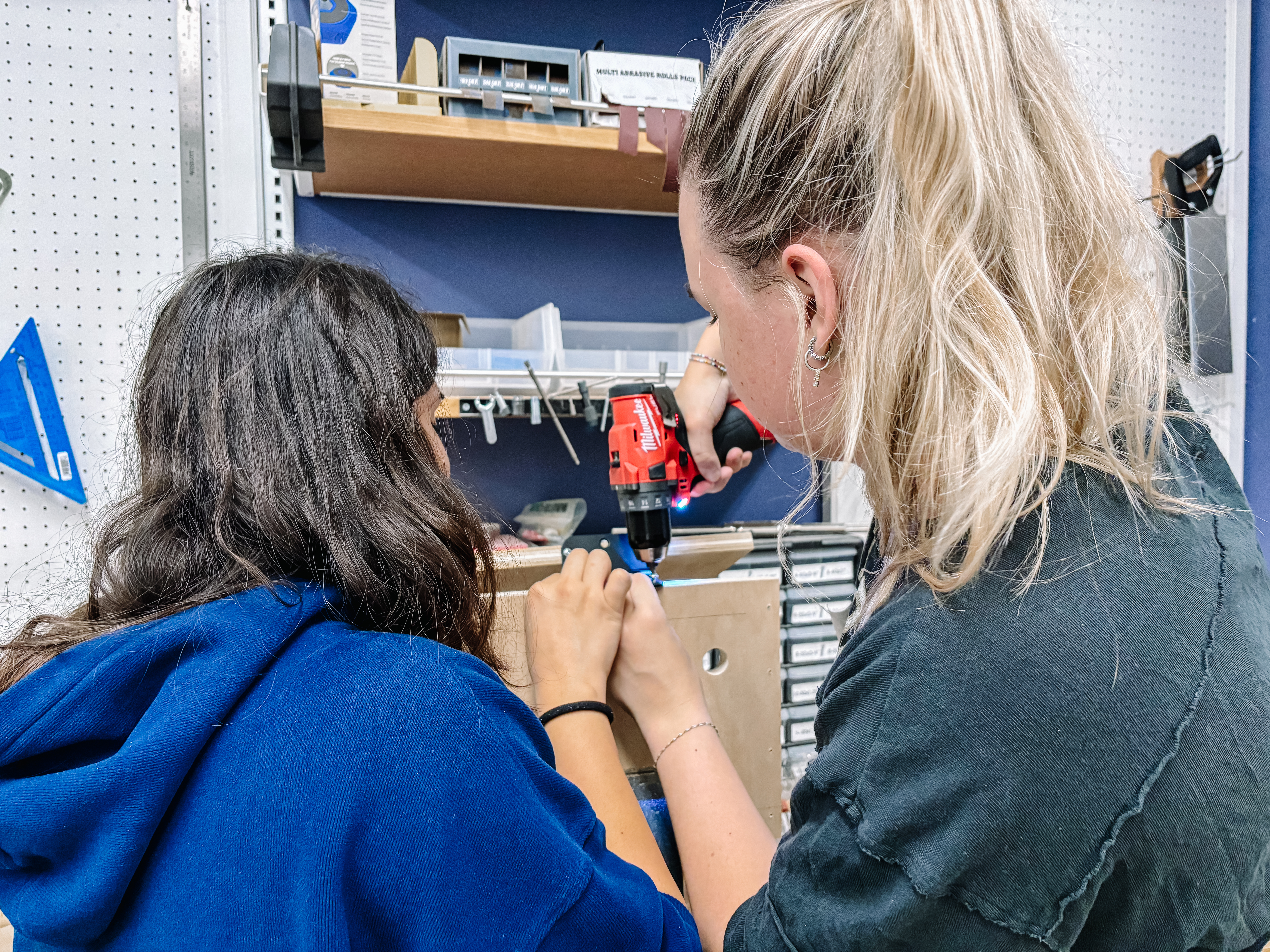
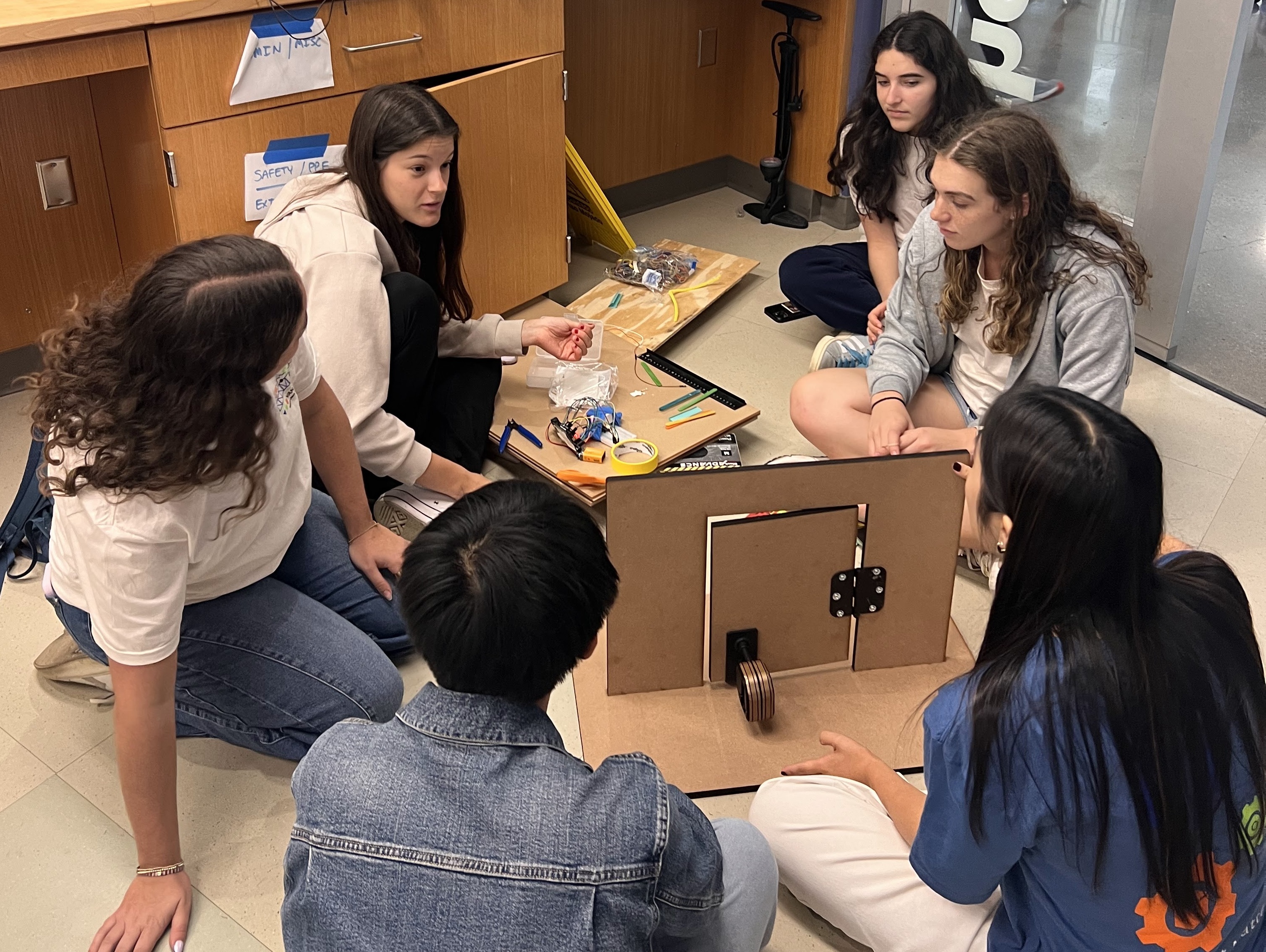
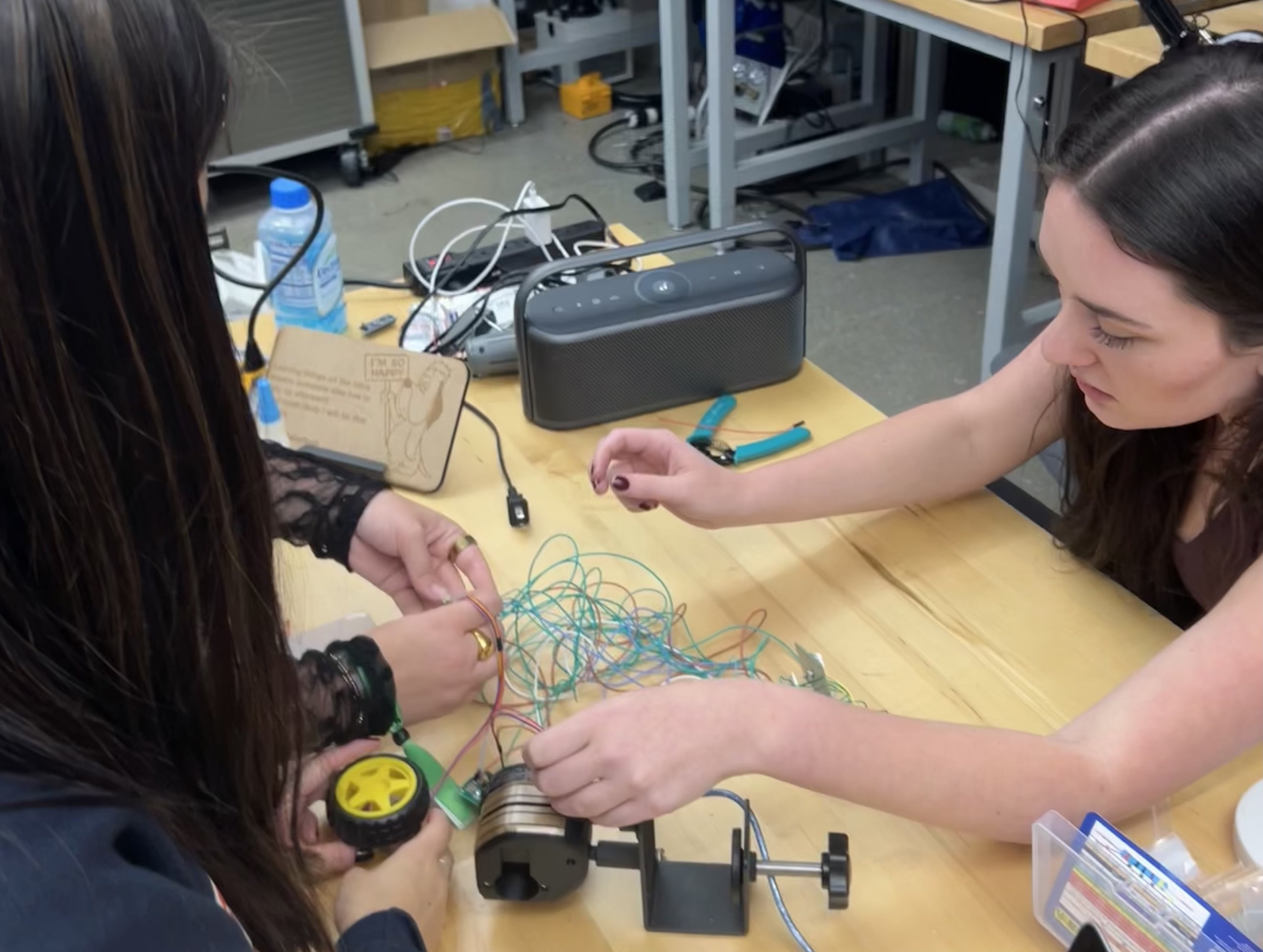
Team 3 - Beverly
Team Lead: Eliza Hill
Beverly had blood clots in her left hand in 2018 that led to a partial amputation. She then had a stroke on her right side while recovering from the amputation, limiting the mobility of her right arm/hand. She loved playing the piano and cooking but has had trouble doing those things since the incident. Beverly wanted something to help her play piano again, and something to help her hold and use kitchen utensils while cooking.
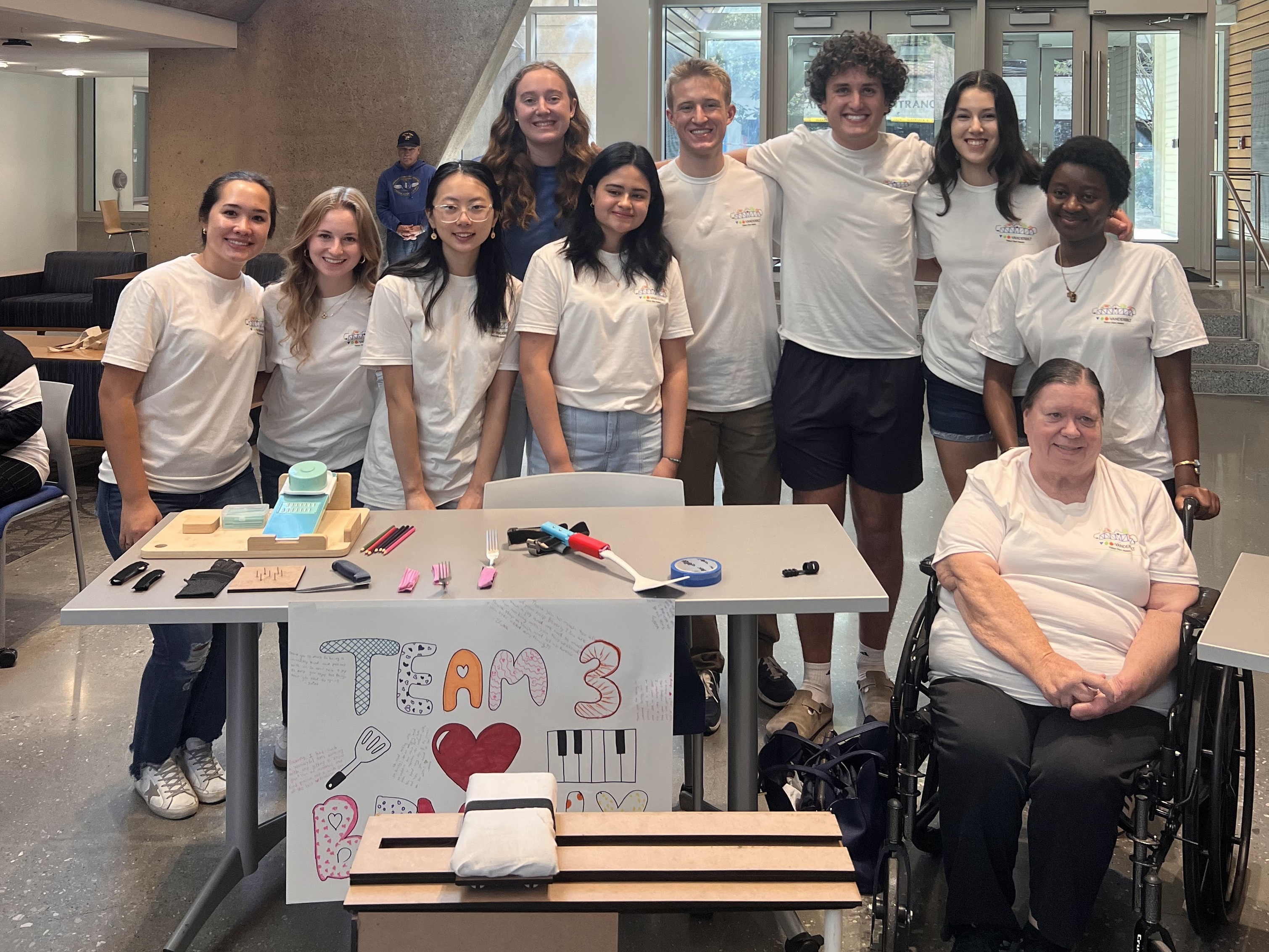
Team 3 created a sliding arm rest for Beverly’s right hand and finger prosthetics for Beverly’s left hand, enabling her to play piano again. Team 3 also created a utensil holder that strapped to Beverly’s hand. Both projects were continued into the 2025 Global Innovation Challenge. The Piano Aid documentation can be found here: Piano Aid Documentation. The Cooking Aid documentation can be found here: Cooking Aid Documentation.
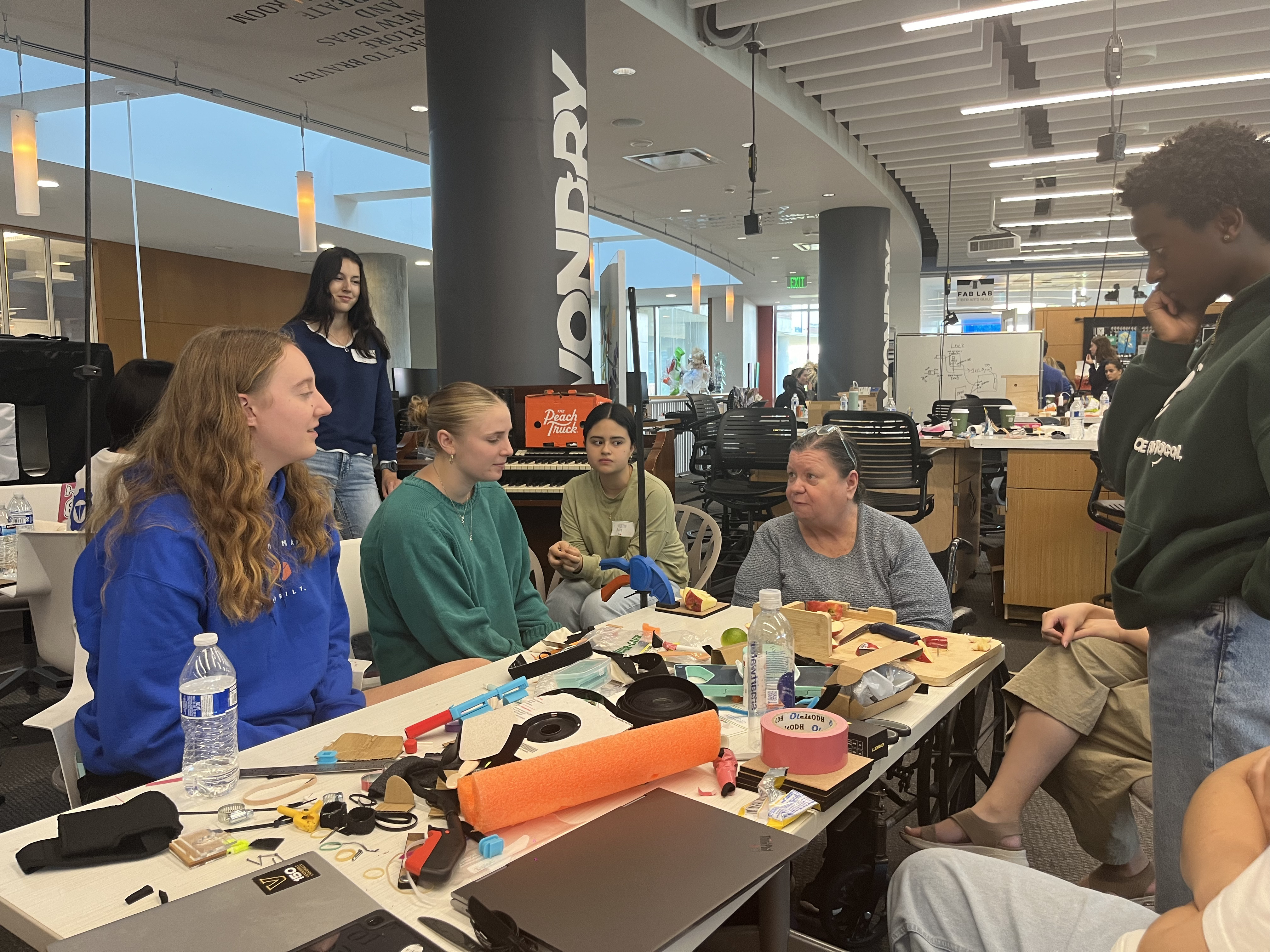
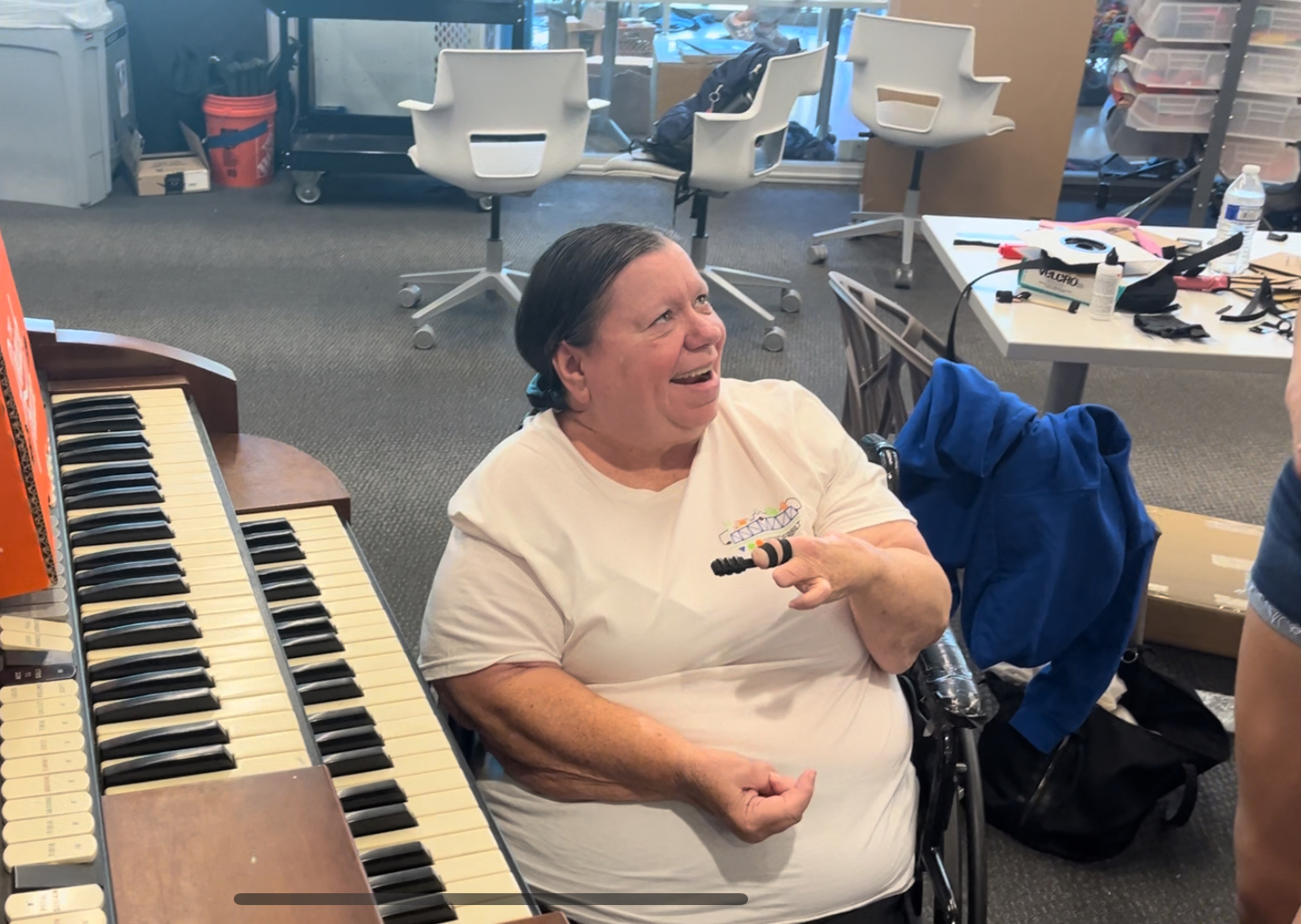
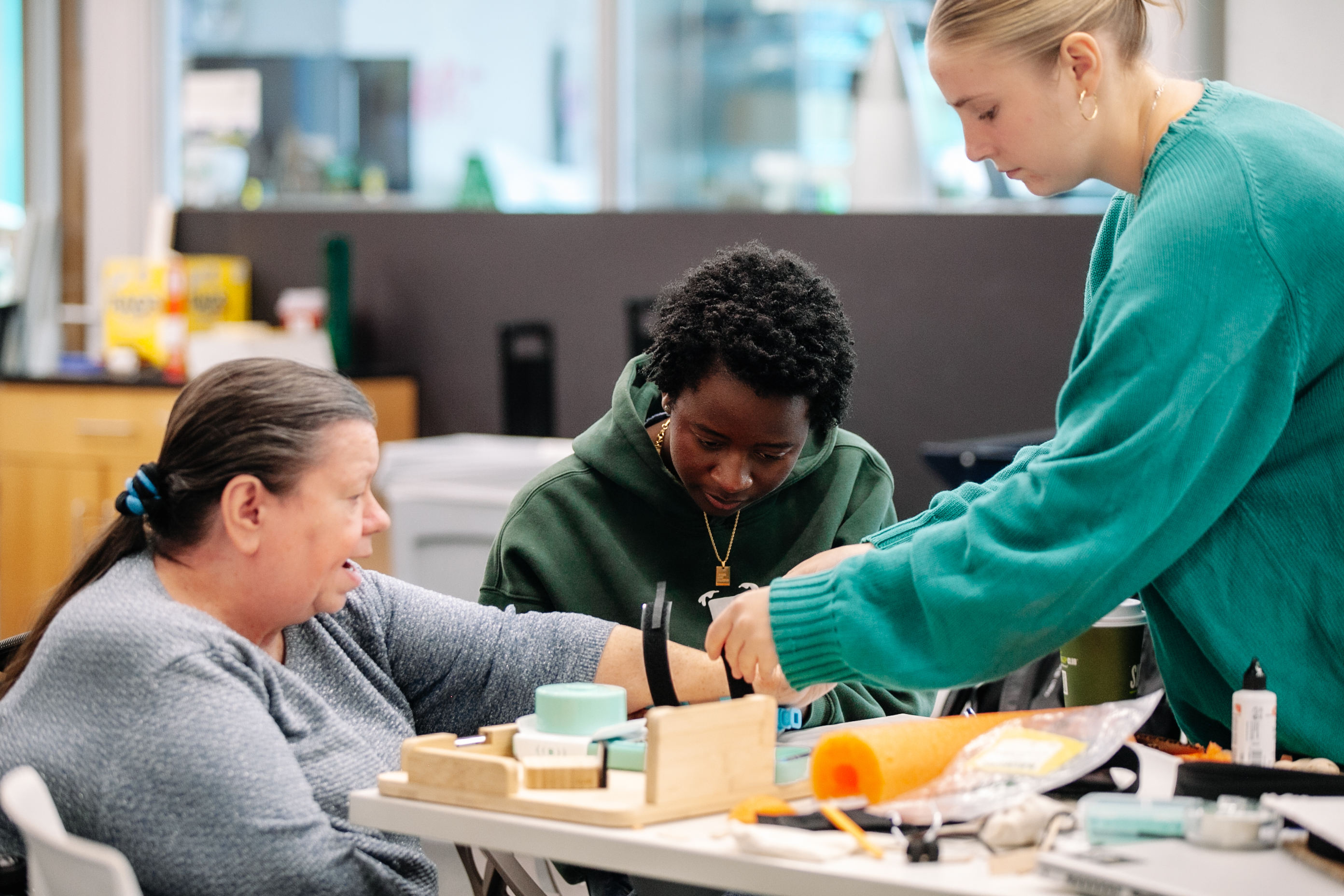
Team 4 - Kenny
Team Lead: Kaiser Williams
Kenny has neuropathy in both hands (his fingers are curled up and he can’t move them). He has trouble gripping things and lost his job because he could no longer write with a pencil. Kenny needed a way to help him grasp and manipulate a pencil/pen so that he could write independently.
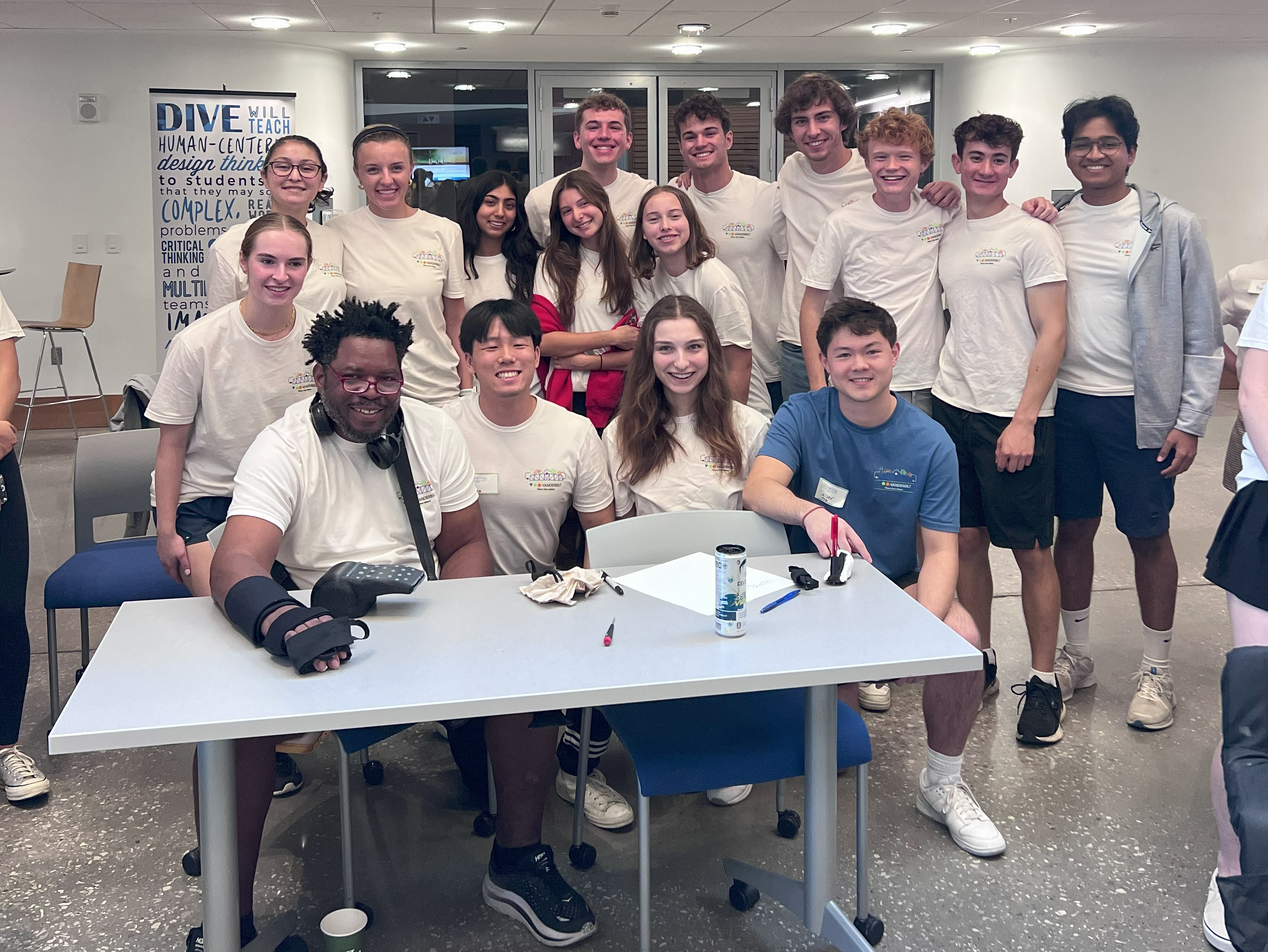
Team 4 created a mouse-like grip that Kenny could use to grip a pencil and write. They also created a finger split that enabled a better pinching motion for activities of daily living. Lastly, Team 4 created a hand stretcher Kenny could wear to bed so that his hand would not be as sore when he woke up in the morning. The finger splint project was continued into the 2025 Global Innovation Challenge. Its documentation can be found here: Pinching Aid and Writing Aid Documentation.
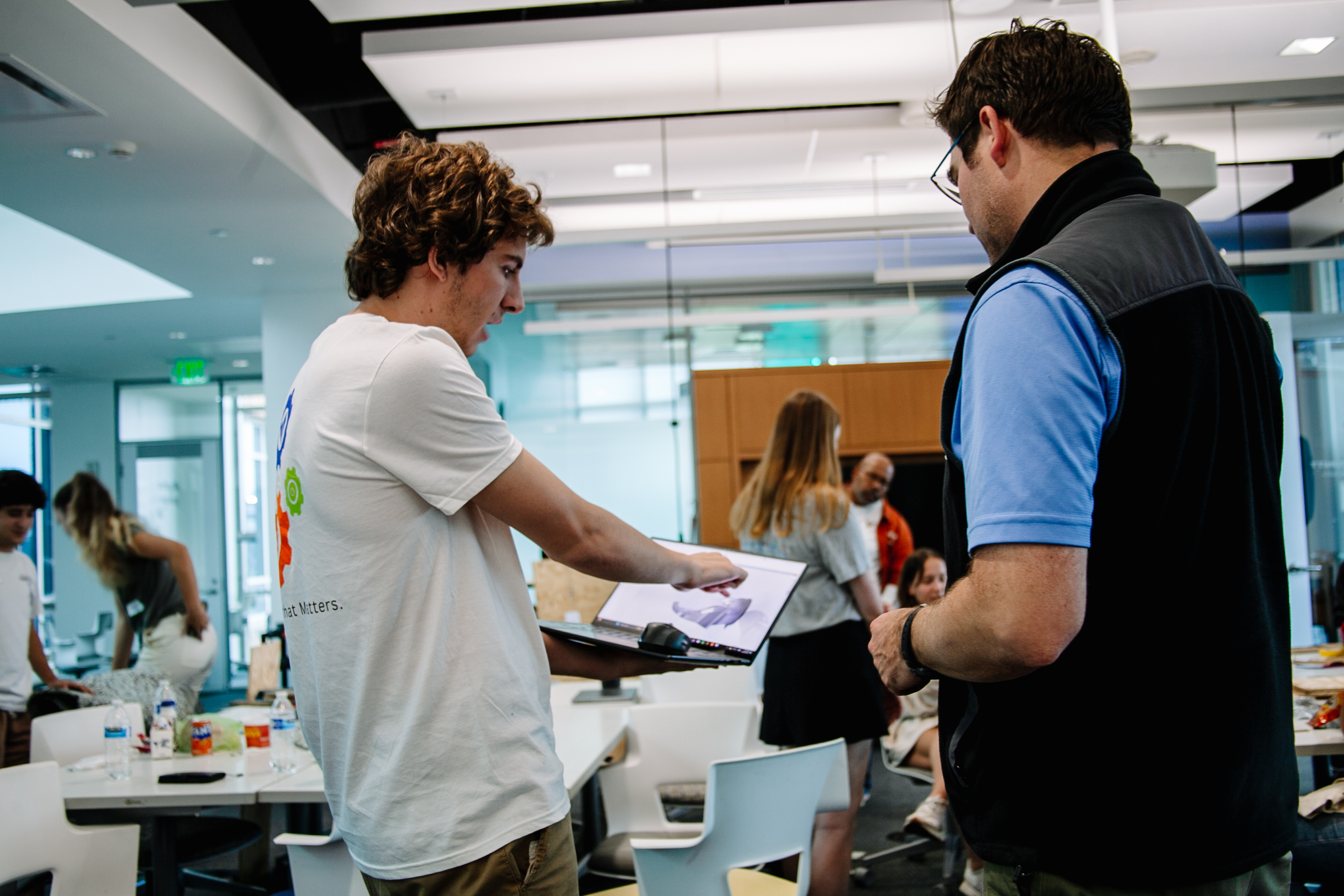
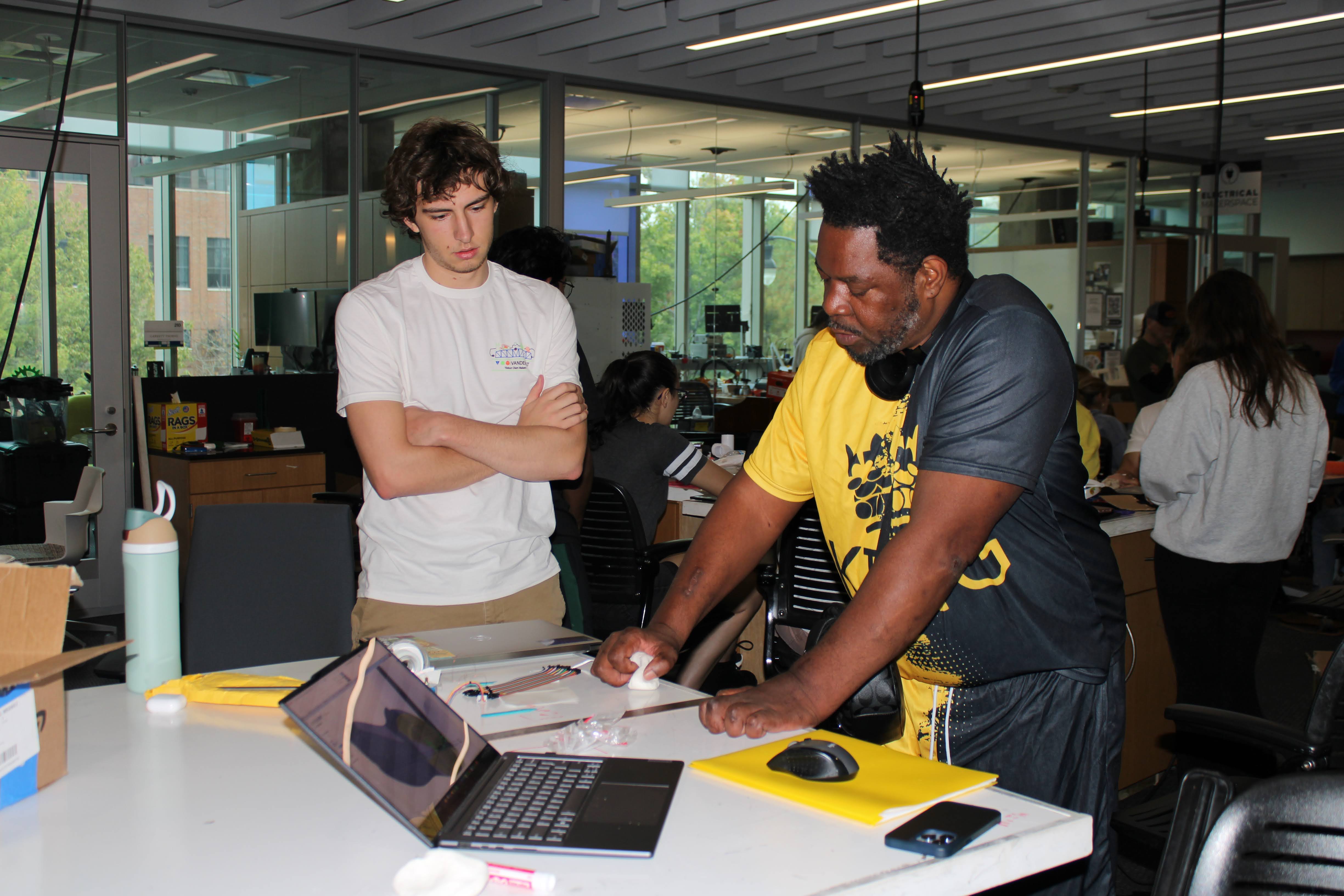
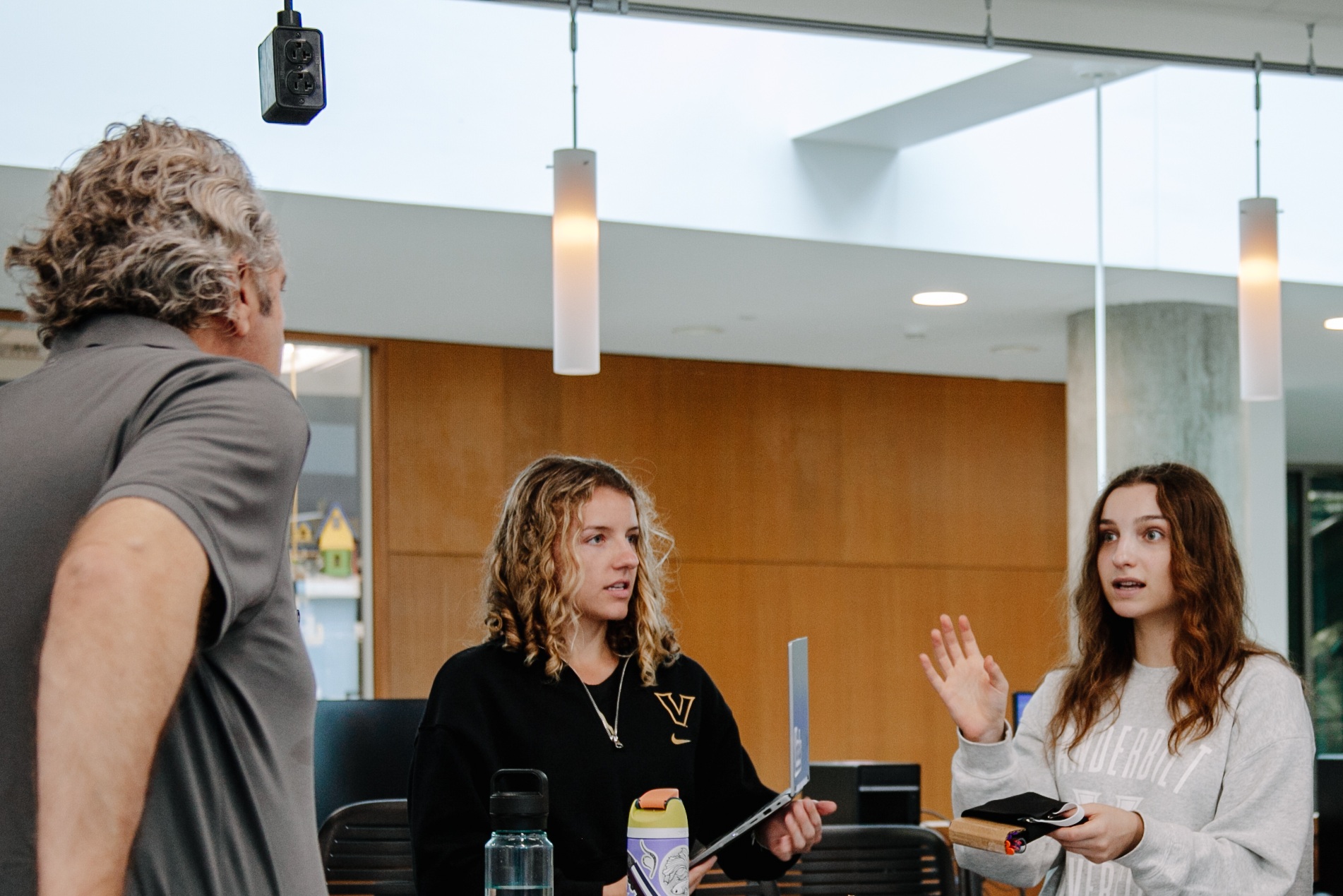
Team 5 - Miyako
Team Lead: Kaitlyn Hannon
Miyako is an 8-year-old with an unknown disability (similar to cerebral palsy) and scoliosis that is getting worse. Her head is usually craned up, making it difficult to look at things in her hands. Miyako wanted a mount for her Nintendo Switch so that she could easily see it while playing. She also wanted a way to put on socks independently as the sock aids currently on the market are only sized for adults.
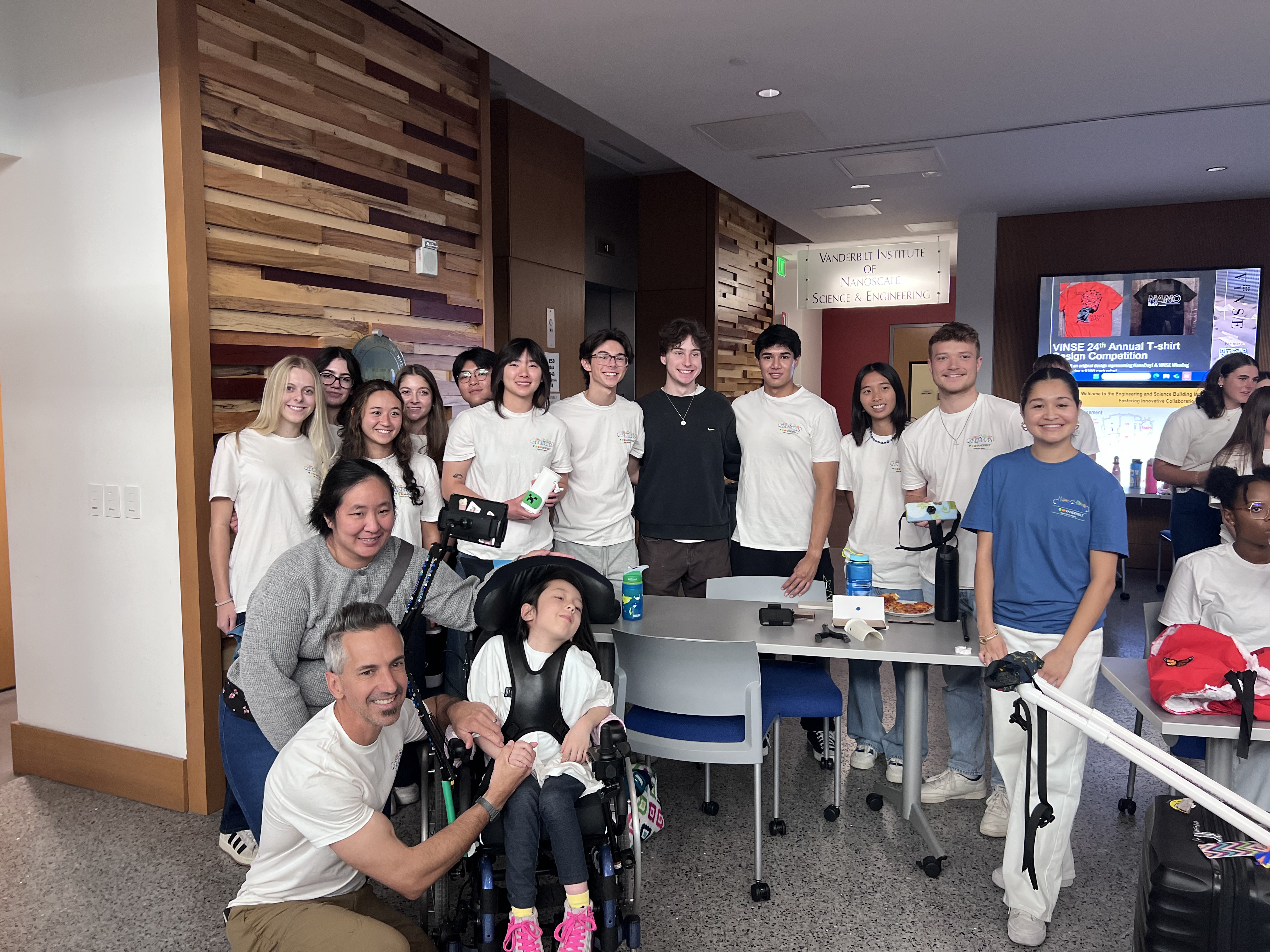
Team 5 created a custom 3D-printed clamp to attach Miyako’s Nintendo Switch to her wheelchair. They also created a clamp for her car seat so that she could play in the car. Additionally, Team 5 created a Miyako-sized sock aid, allowing her to put on socks independently. The Nintendo Switch mount documentation can be found here: Nintendo Switch Wheelchair Mount Documentation.
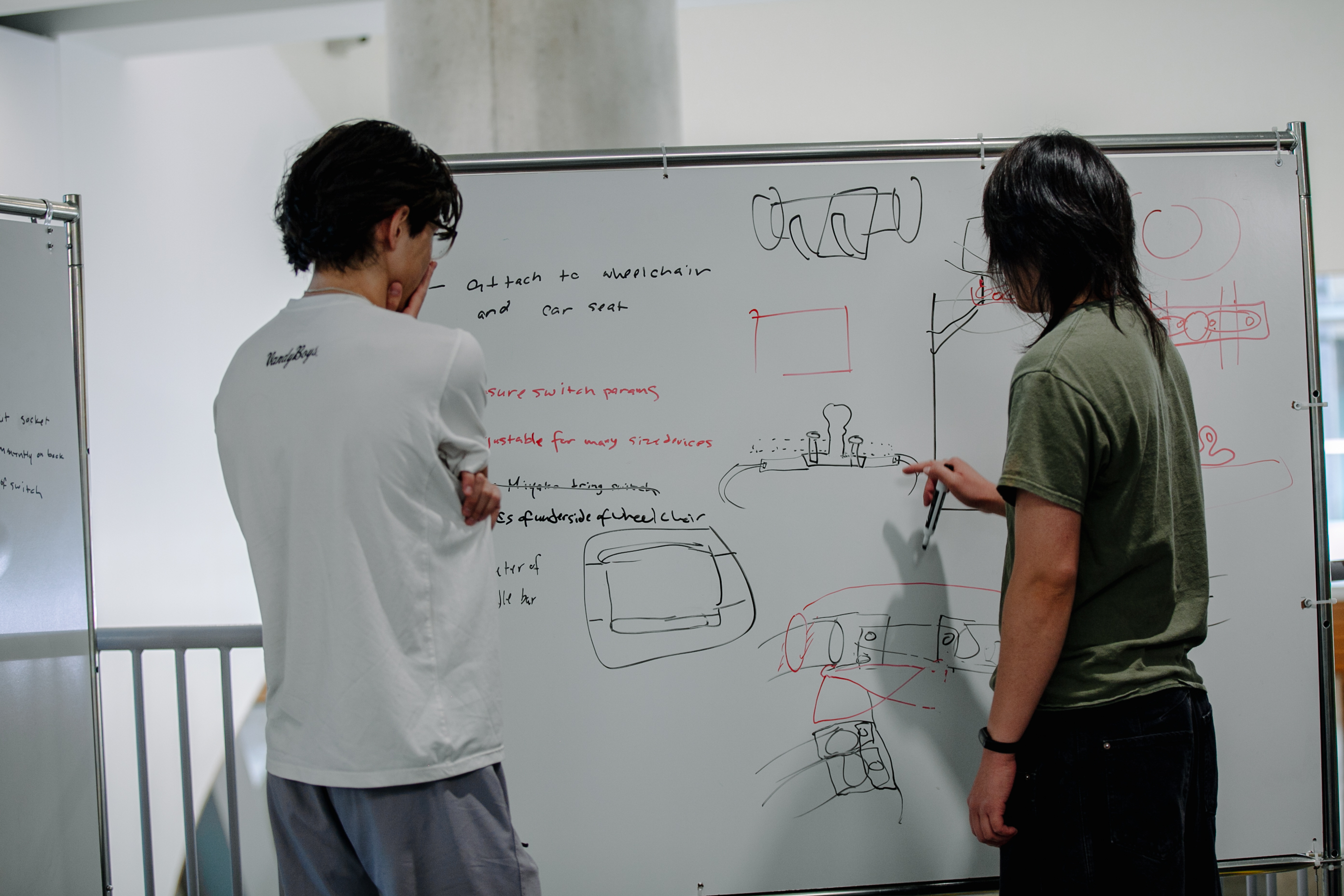
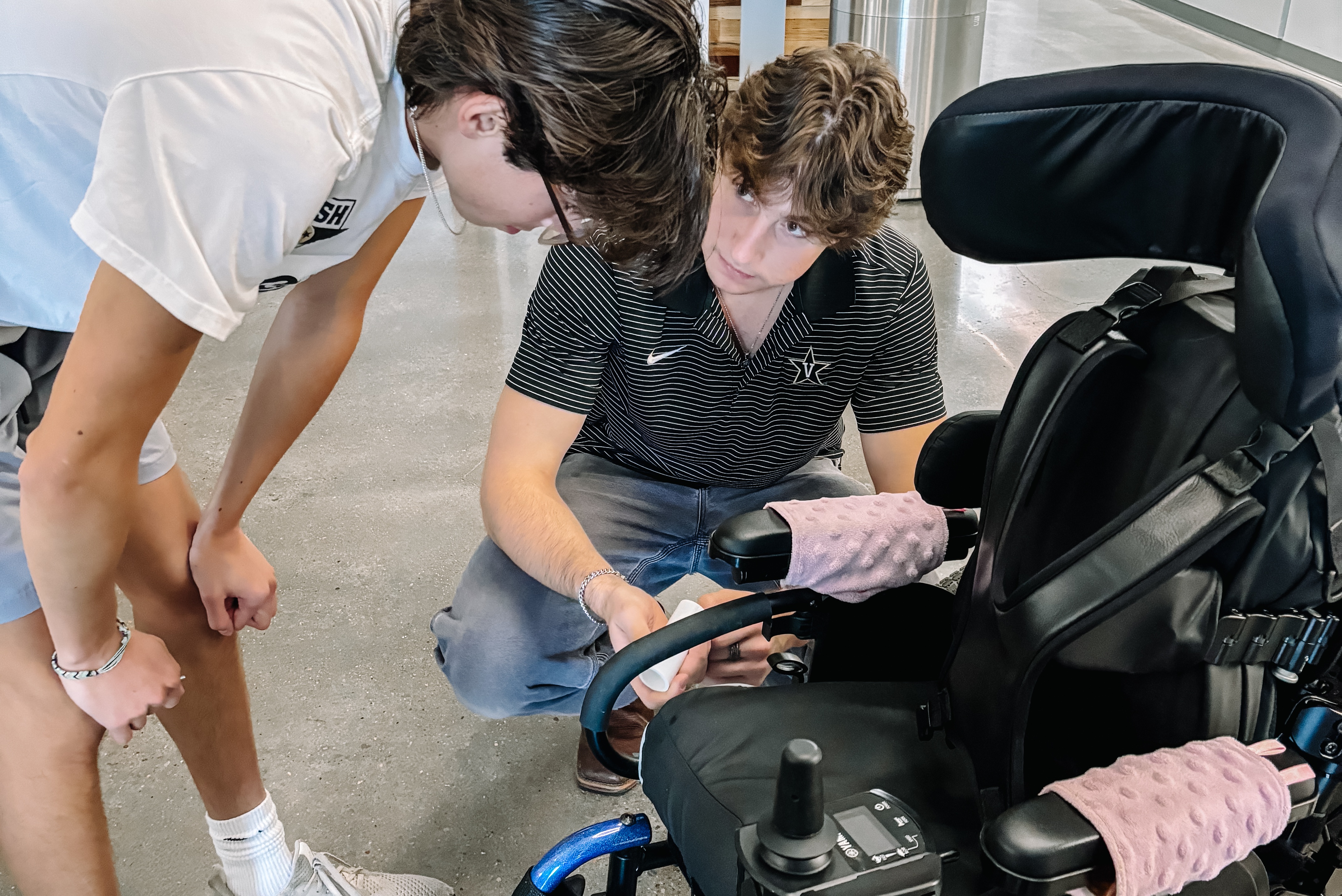
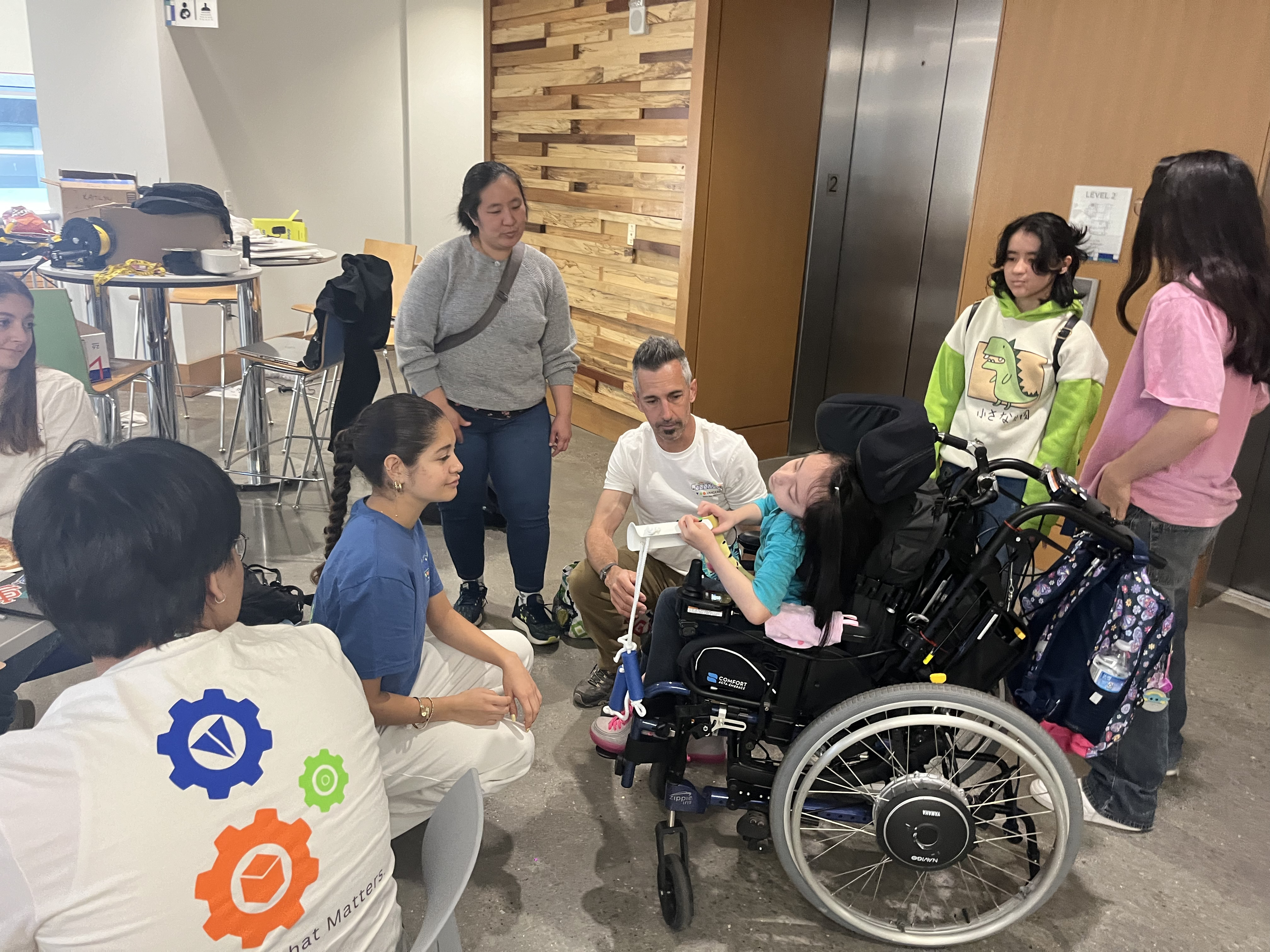
Team 6 - Liam
Team Lead: Charlotte Lichtenfeld
Liam, a returner from the 2023 Makeathon, is a 9-year-old with Kleefstra syndrome. He often experiences meltdowns when walking outside the house that stop when he is able to sit down. Liam is too large for commercial strollers, and a medical stroller for his size would be $7000. Liam and his family needed an affordable stroller that could support Liam.
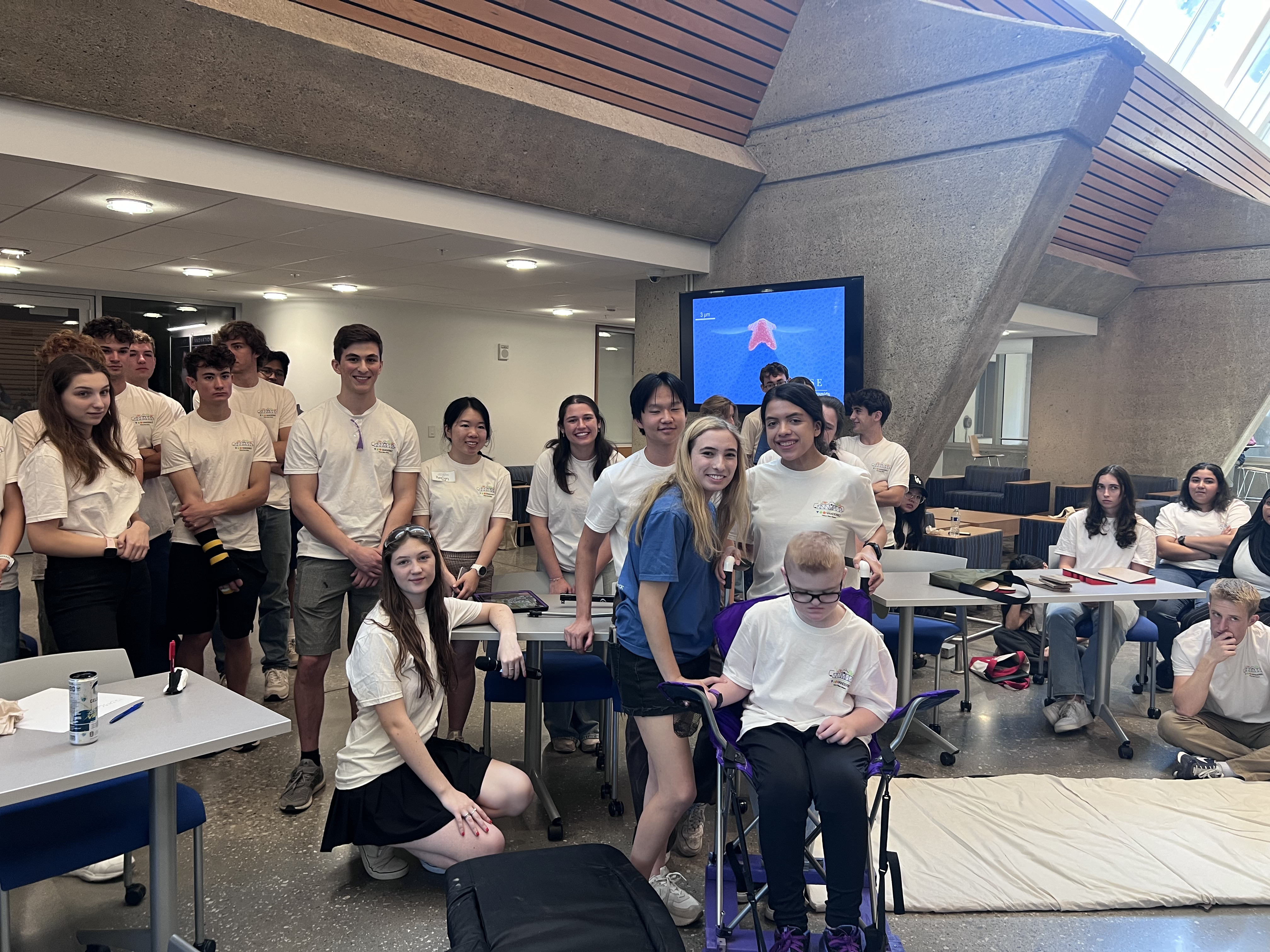
Team 6 created two stroller options for Liam. The first was a folding chair mounted on a wheeled base. The second was a chair mounted to a lower base that could be flattened. This project was continued into the 2025 Global Innovation Challenge. Its documentation can be found here: Adapted Stroller Documentation.
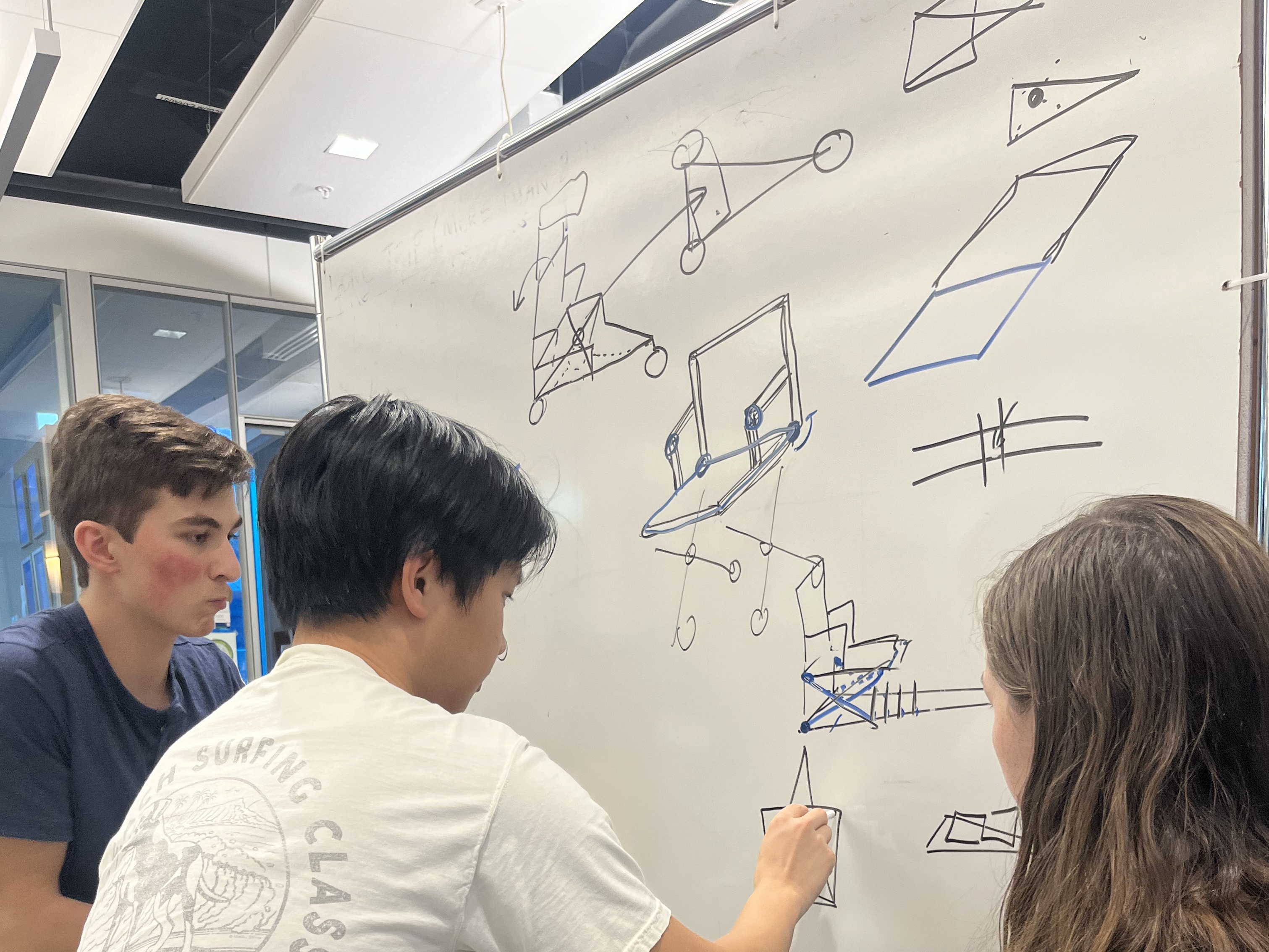
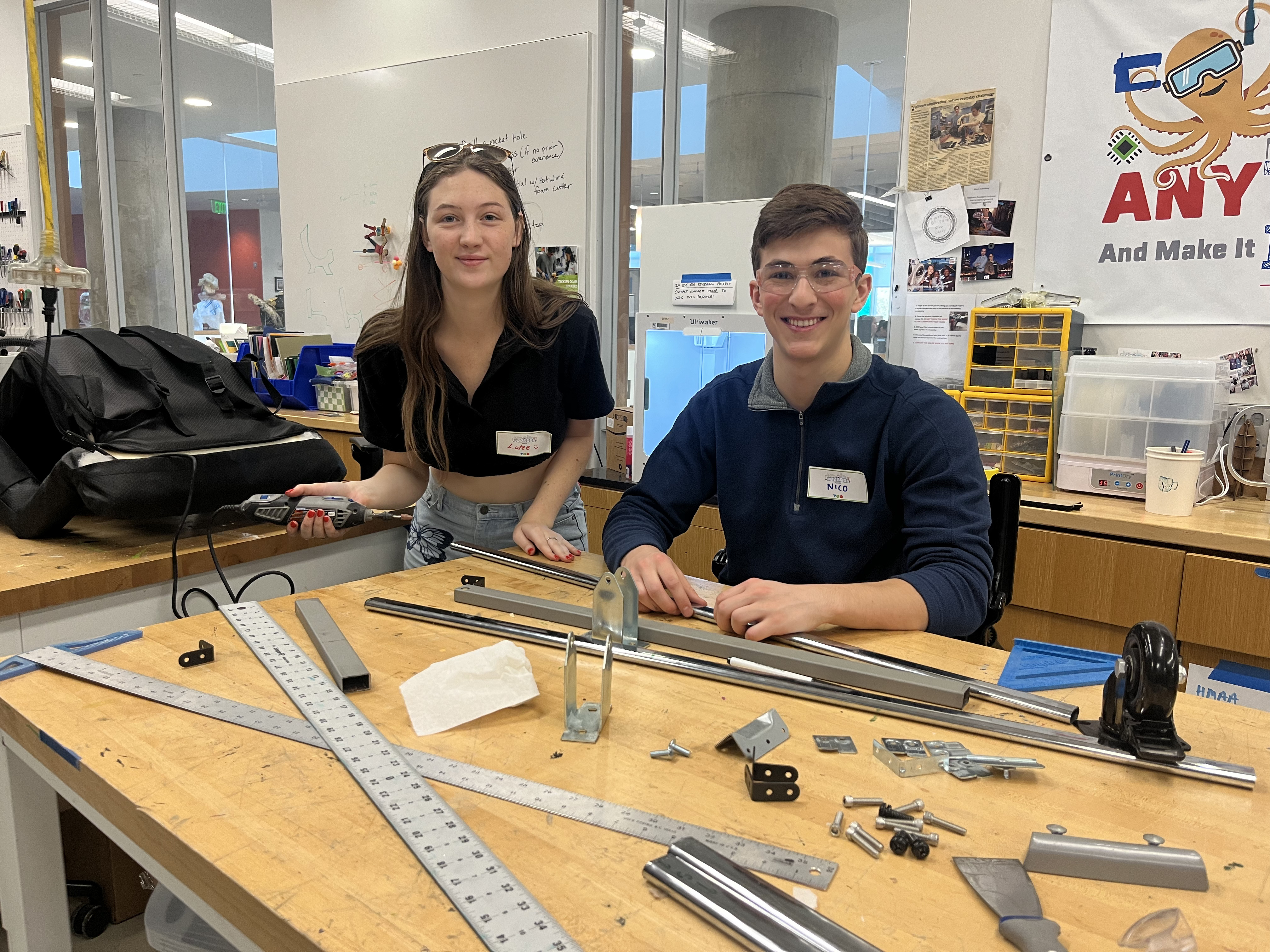
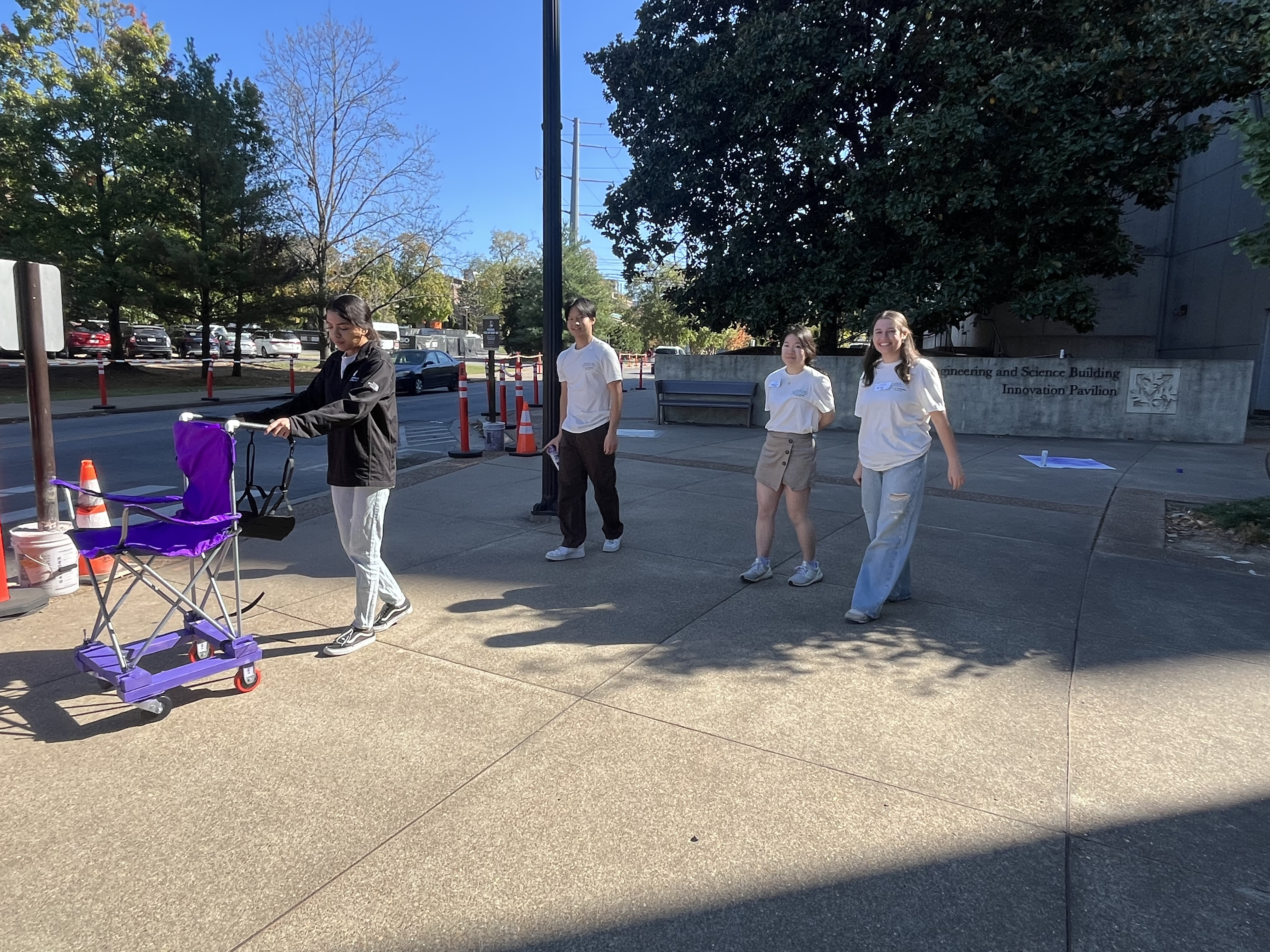
Team 7 - Deklan
Team Lead: Maya Miller
Deklan is an 11-year-old with Duchenne muscular dystrophy. He uses a power wheelchair to get around most of the time. His wheelchair is extremely heavy, and while his family has a ramp to store it at the back of their car, the ramp is narrow and the wheelchair often falls off, leavings his parents to bear the hundreds of pounds to keep it on track. Additionally, Deklan loves drawing, but often gets tired from moving his arms for more than a couple minutes. Deklan needed sidings for his wheelchair ramp, as well as a folding table that could attach to his wheelchair for his art. He also needed an adaptive Halloween costume for his school’s Halloween dance!
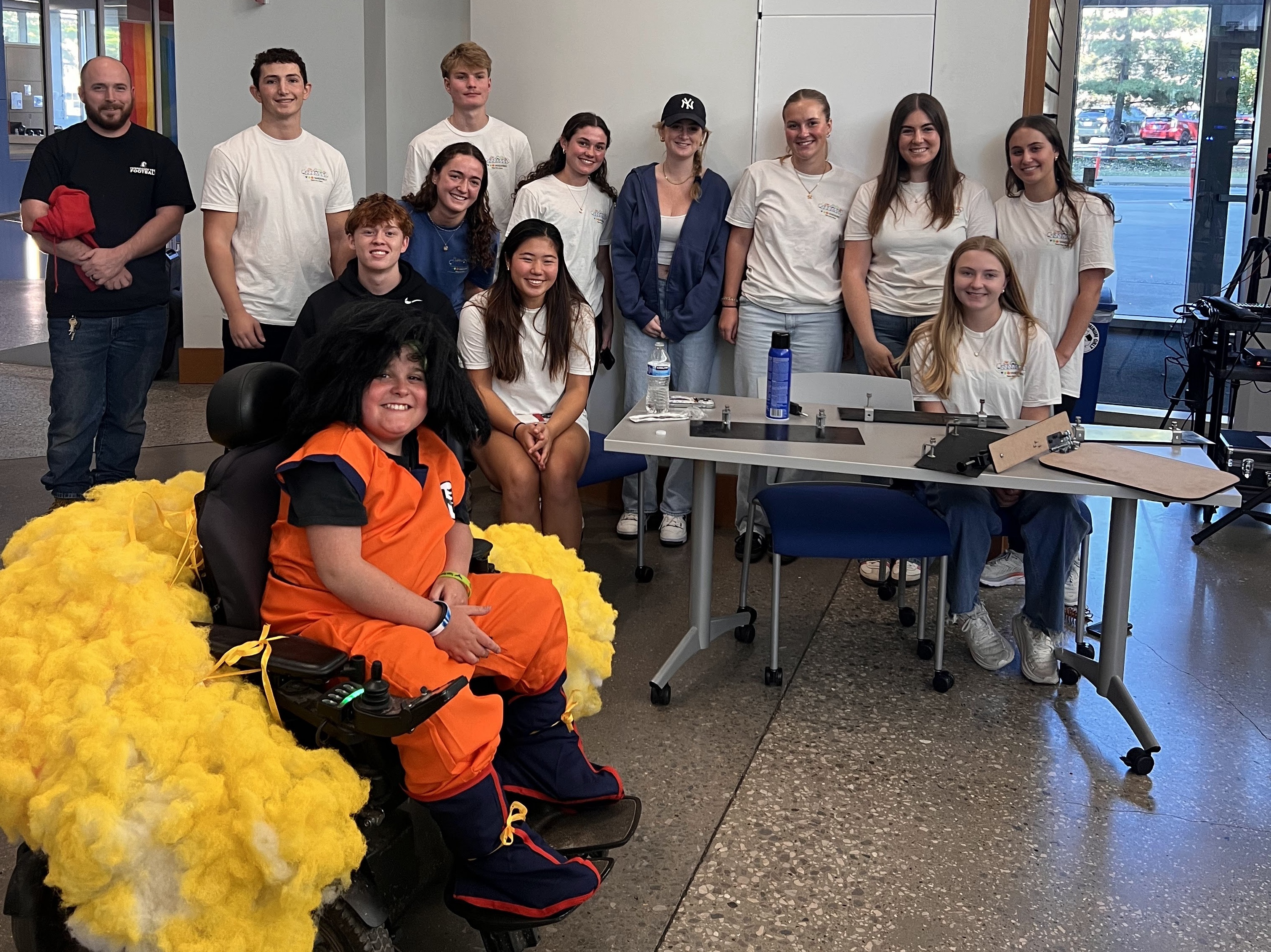
Team 7 created a folding table that could be clamped onto Deklan’s wheelchair, inspired by tables in classrooms. They also created removable sidings that could be attached to his car’s wheelchair ramps. Lastly, they crafted him a Dragon Ball Z Son Goku light-up Halloween costume. The folding table project was continued into the 2025 Global Innovation Challenge. Its documentation can be found here: Folding Table Attachment Documentation. Additionally, the wheelchair ramp sidings documentation can be found here: Wheelchair Ramp Sidings Documentation.
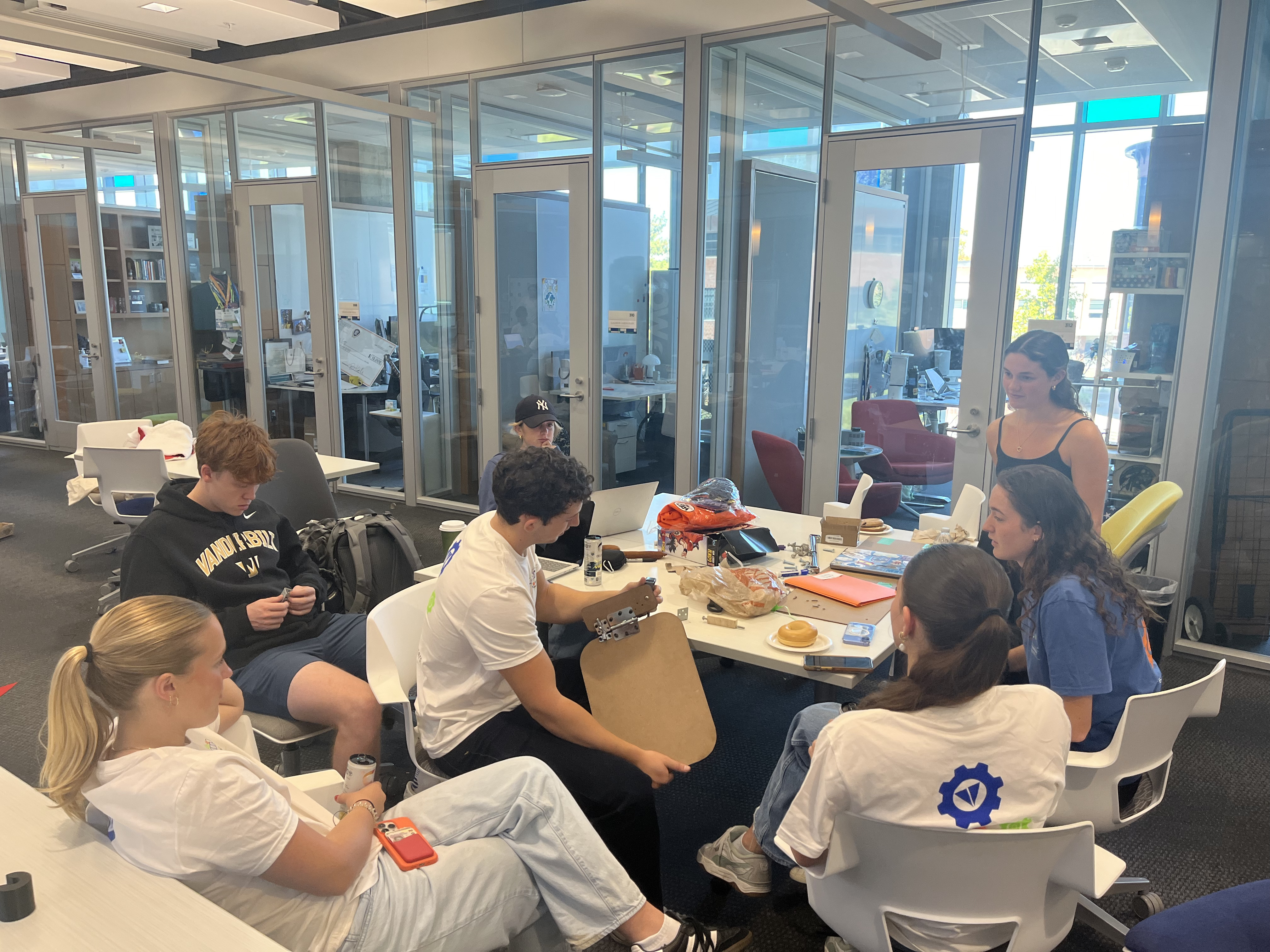
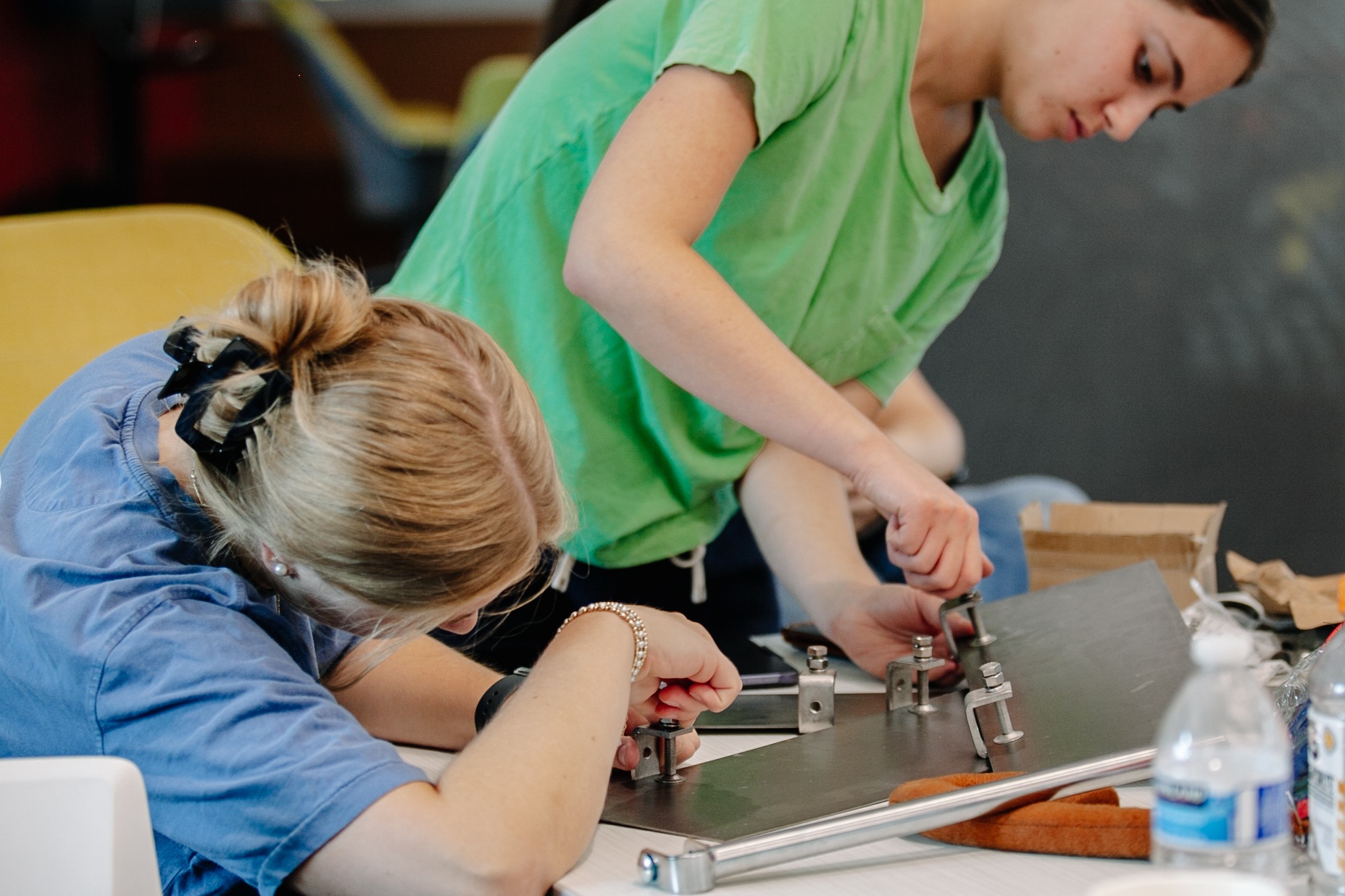
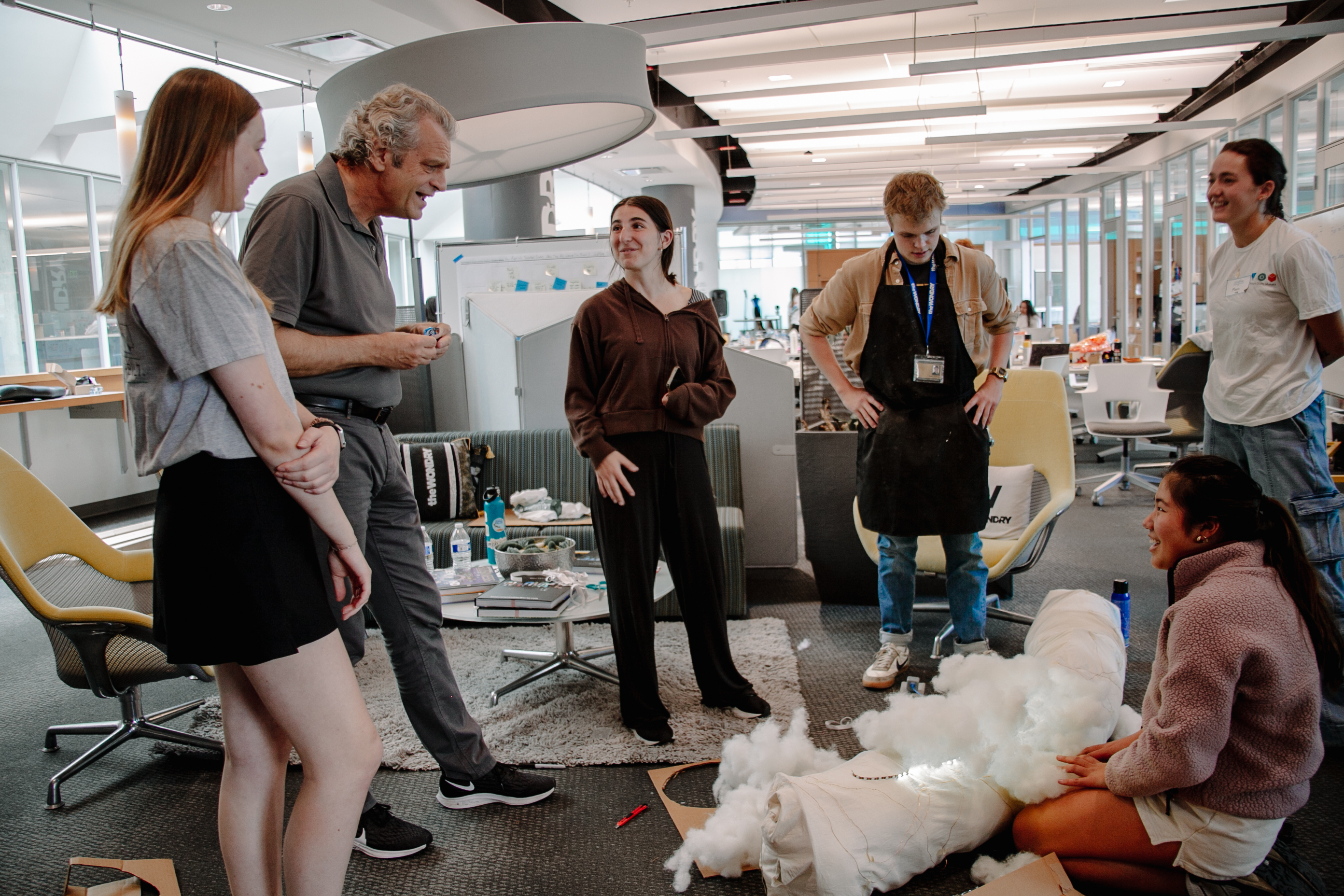
Team 8 - Elise
Team Lead: Ella Provancher
Elise, a physical therapist at the Pi Beta Phi Rehabilitation Center, works with patients who are severly weak or paralyzed. She uses a standing frame in the clinic for exercises, but some patients have increased muscle tone in their feet which prevents them from putting their feet flat on the foot plates. She currently uses a mix of belts/straps/towels under a patient’s foot, but it’s not ideal. Additionally, it is hard for patients to continue exercises at home if they can only work on a squishy and unsupportive mattress. Elise needed a set of wedges to put in the standing frame’s foot plates to bias the patients’ feet towards eversion. She also needed a lightweight surface that patients could place on their bed to have a firmer surface.
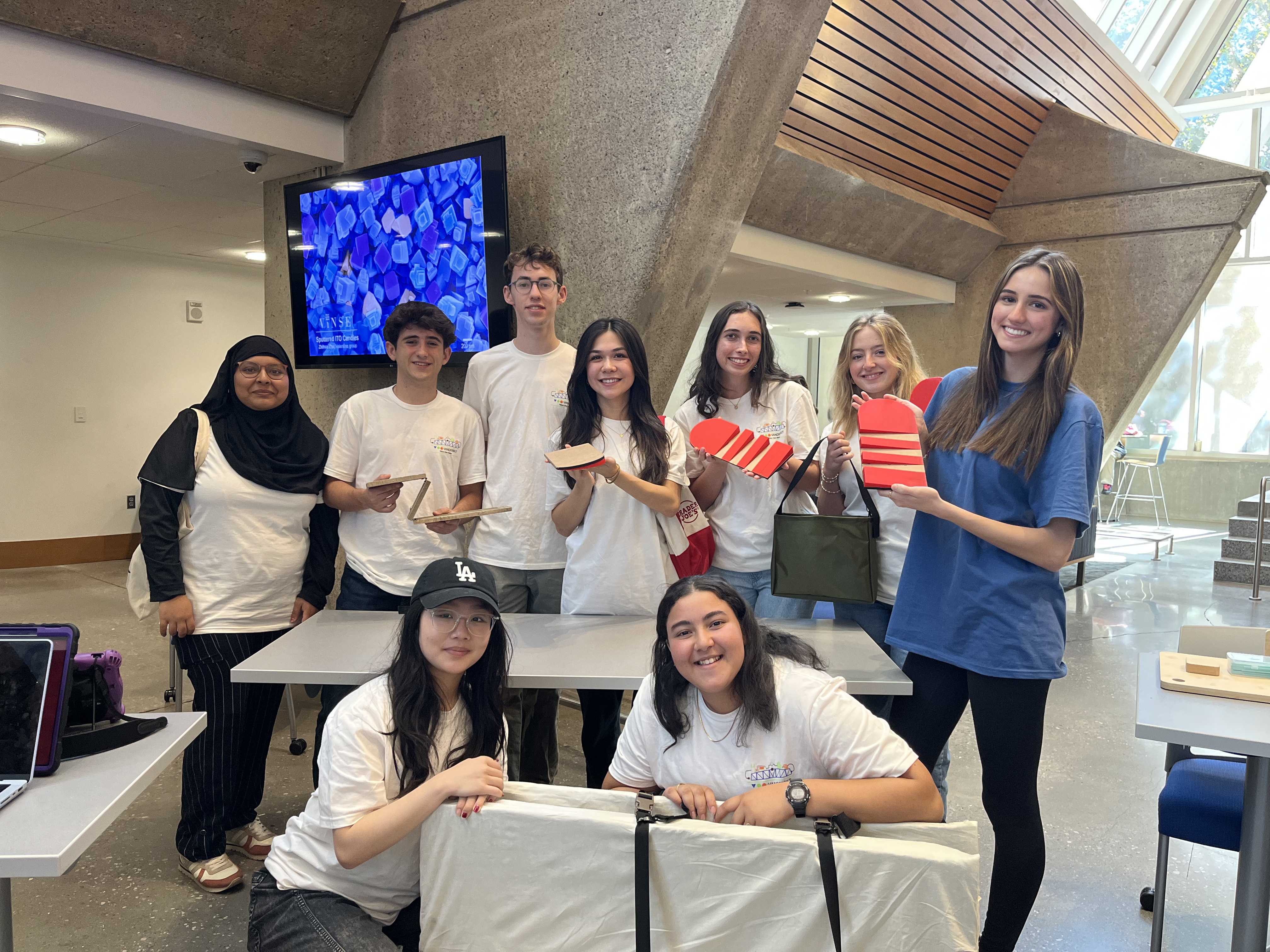
Team 8 created a set of foot plate inserts for both feet at varying angles, giving Elise multiple options for biasing her patients’ feet towards eversion. They also created a light weight yet sturdy folding bed topper that gives patients a more firm surface to complete their physical therapy exercises on at home. The foot wedges documentation can be found here: Foot Eversion Wedges Documentation. The exercise mat documentation can be found here: Exercise Mat Documentation.
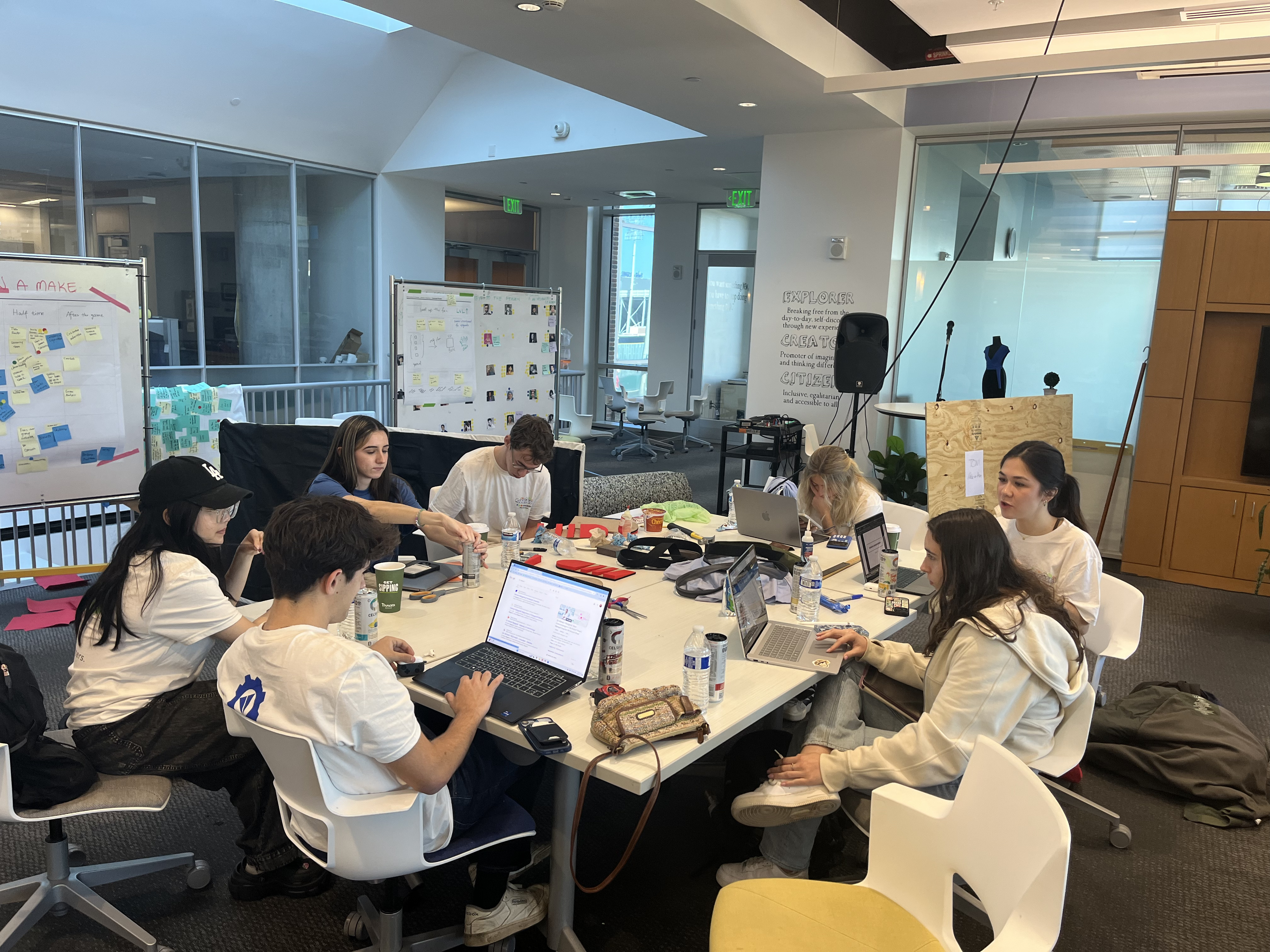
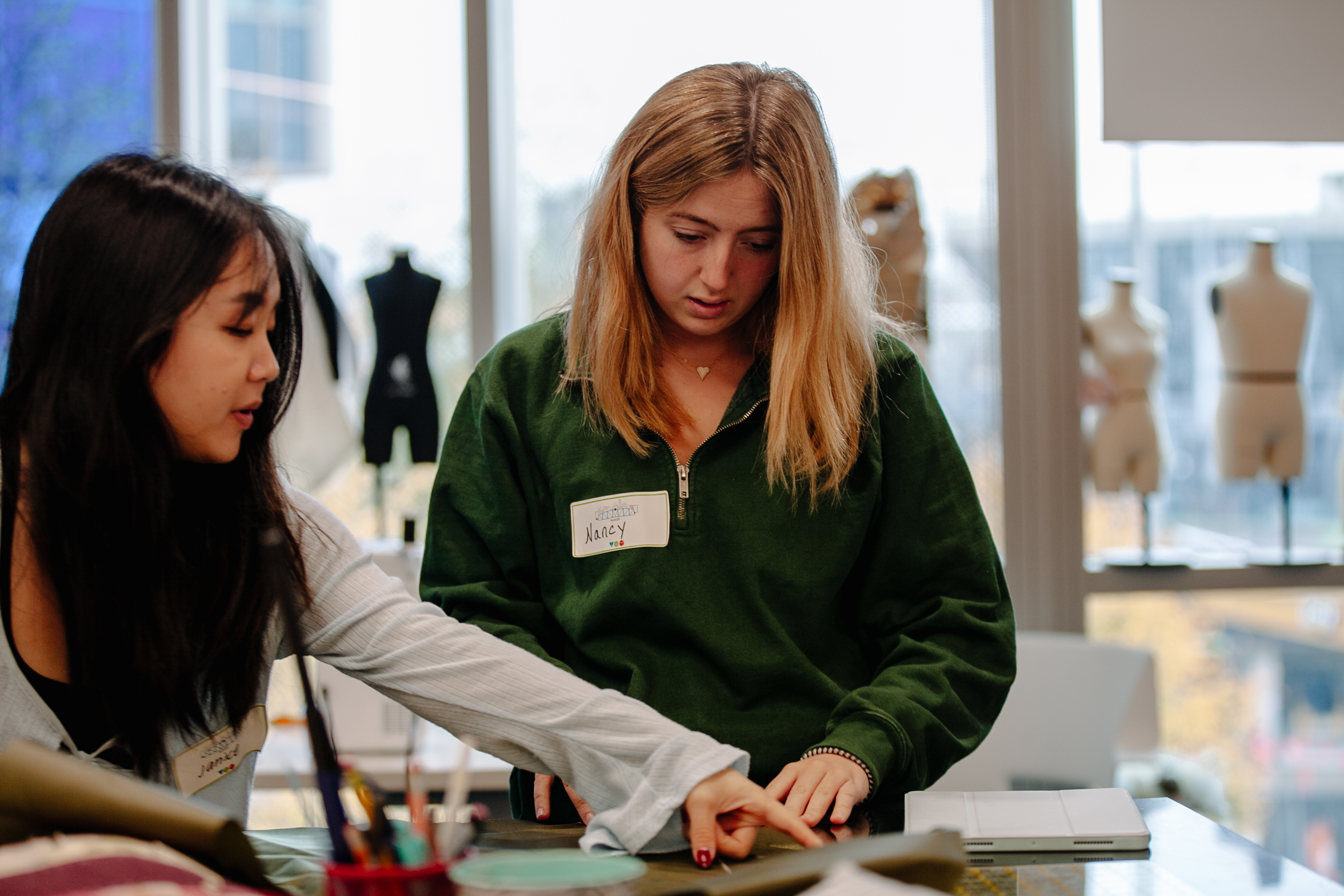
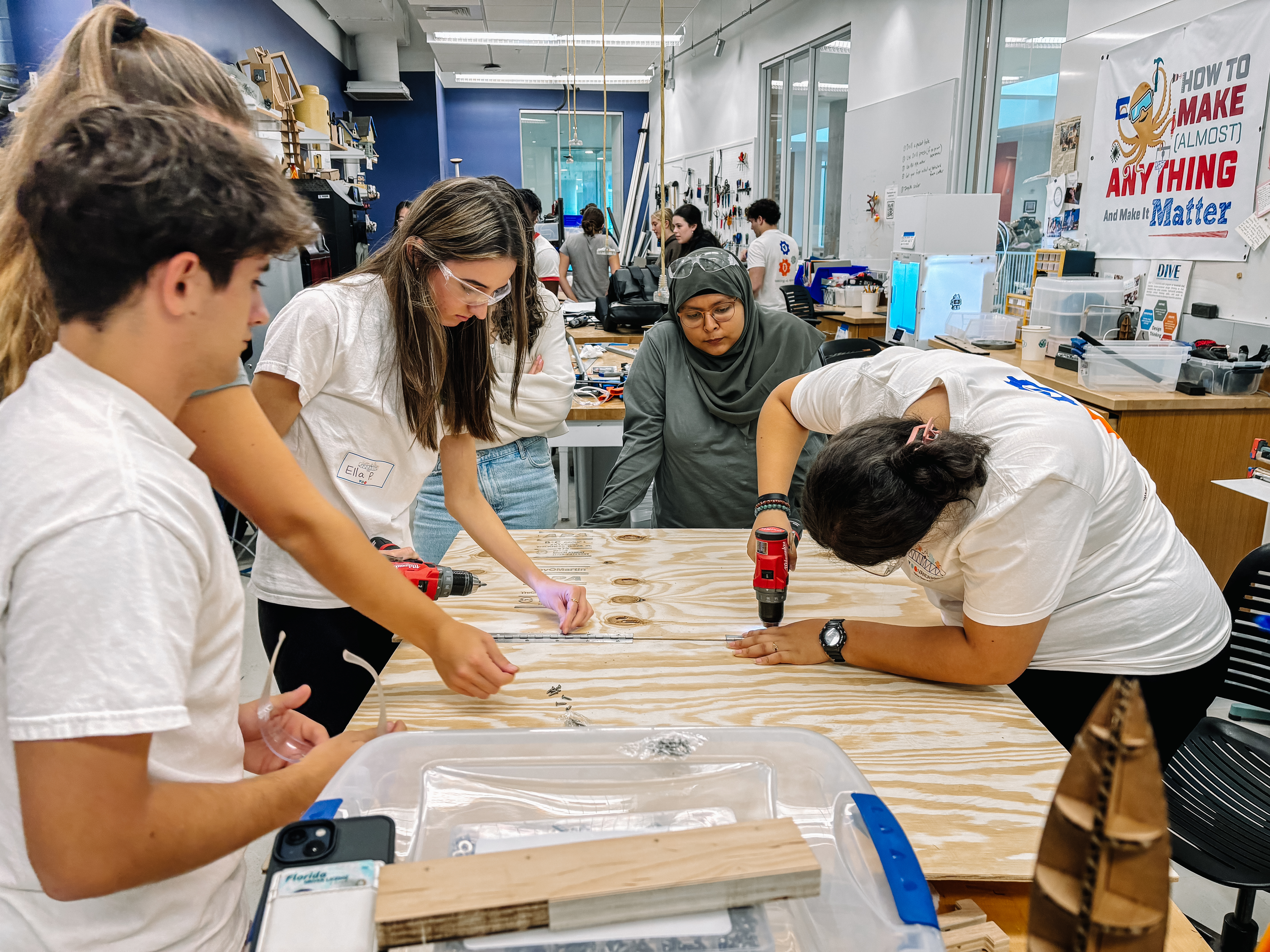
Team 9 - Nassanah
Team Lead: Tessa Mahoney
Nassanah has hypermobile Elhers-Danlos syndrome, leading her to frequently hyperextend and injure her joints. She travels often for work, and has difficulty pushing and lifting her suitcase. When at home, she makes frequent trips to the grocery store as she can only carry one bag up her her apartment at a time. Nassanah needed wrist supports for rolling and lifting her luggage, and something to make carrying groceries upstairs easier.
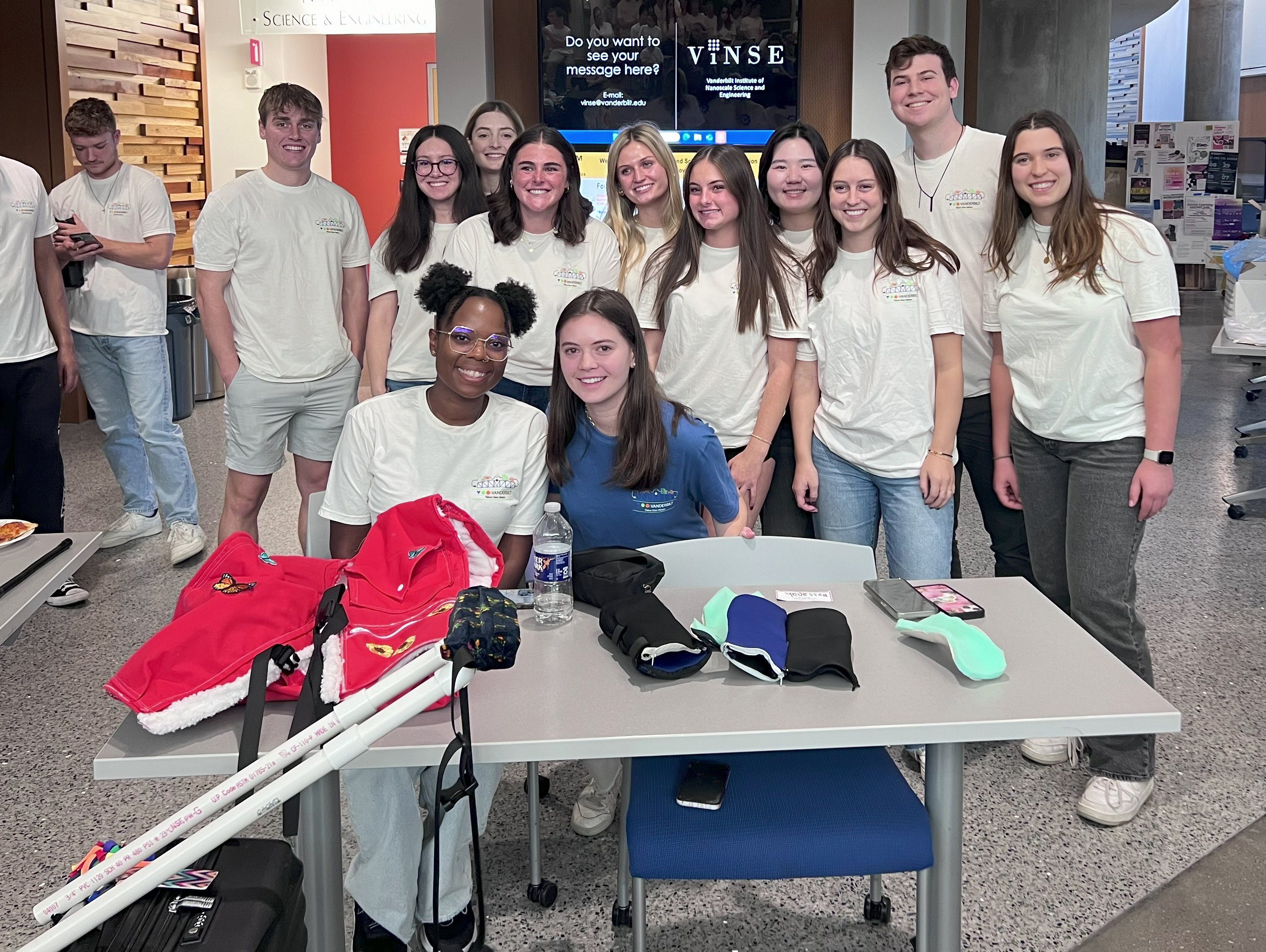
Team 9 created an insulated grocery vest, placing a majority of the weight at Nassanah’s core, enabling Nassanah to take fewer trips between her car and her apartment. They also created custom wrist braces that were more rigid than her daily-use braces. Lastly, they created a waist-driven suitcase pusher so Nassanah could navigate airports hands-free. The grocery vest documentation can be found here: Grocery Vest Documentation. The wrist brace documentation can be found here: Travel Braces Documentation. The suitcase pusher documentation can be found here: Suitcase Pusher Documentation.
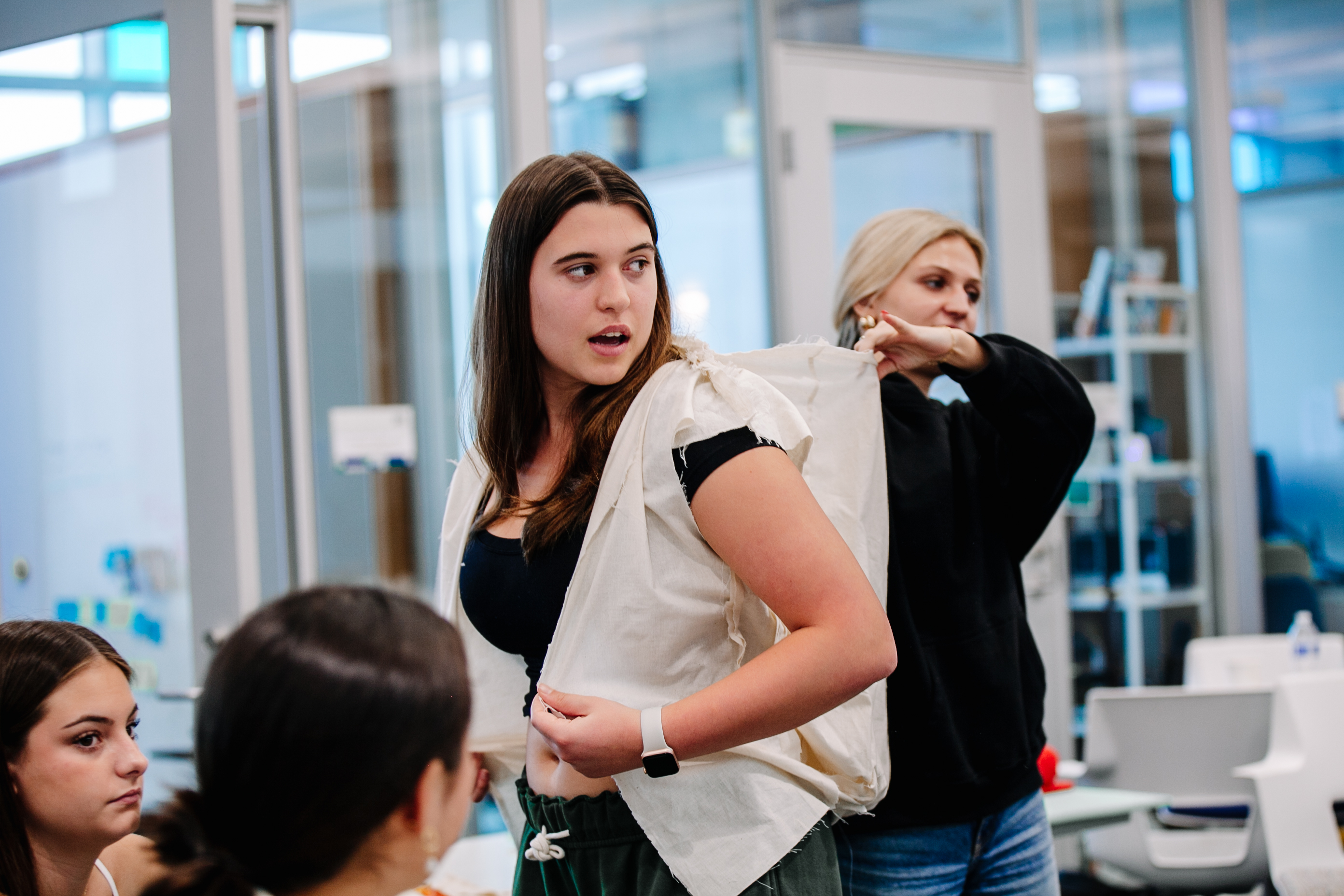
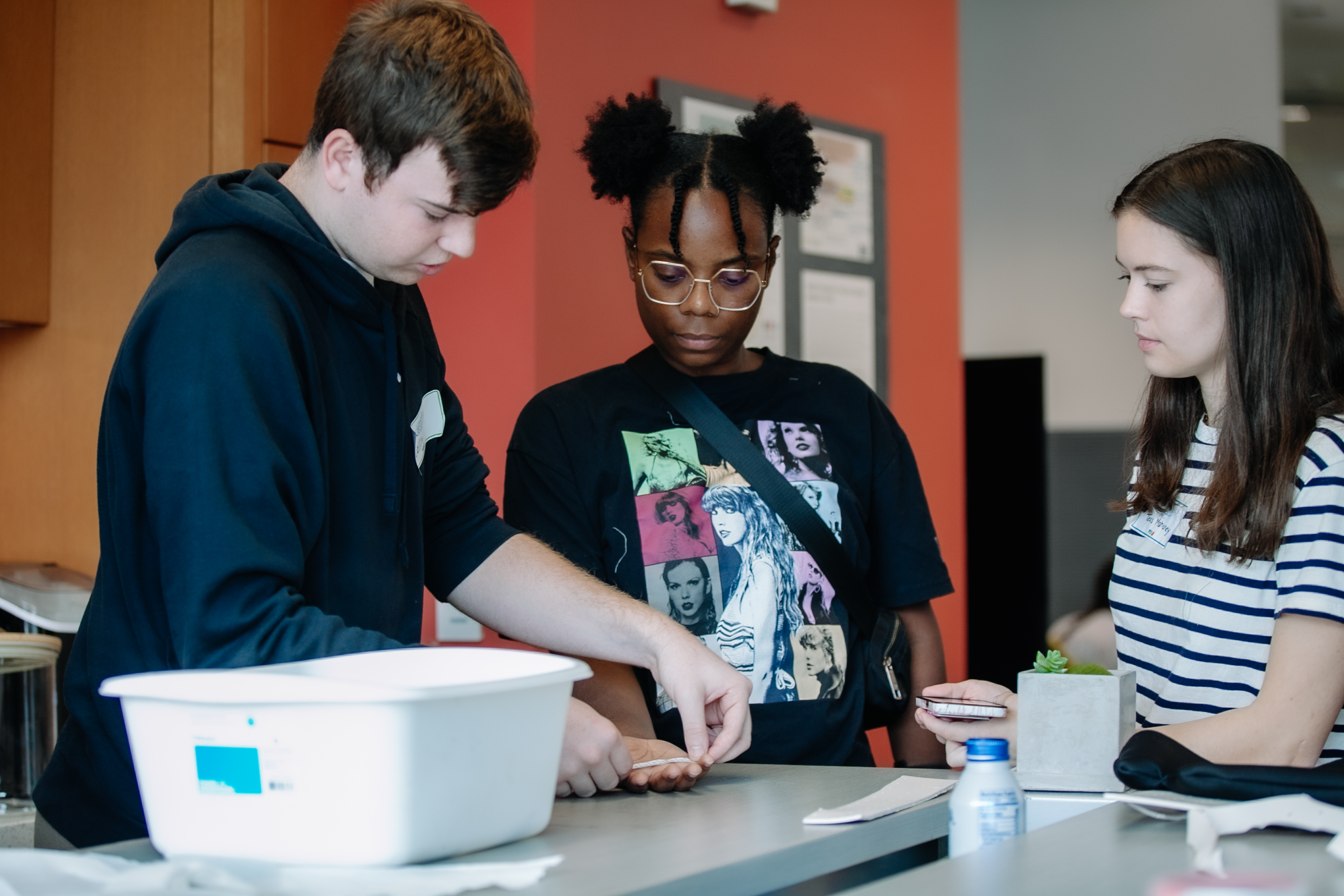
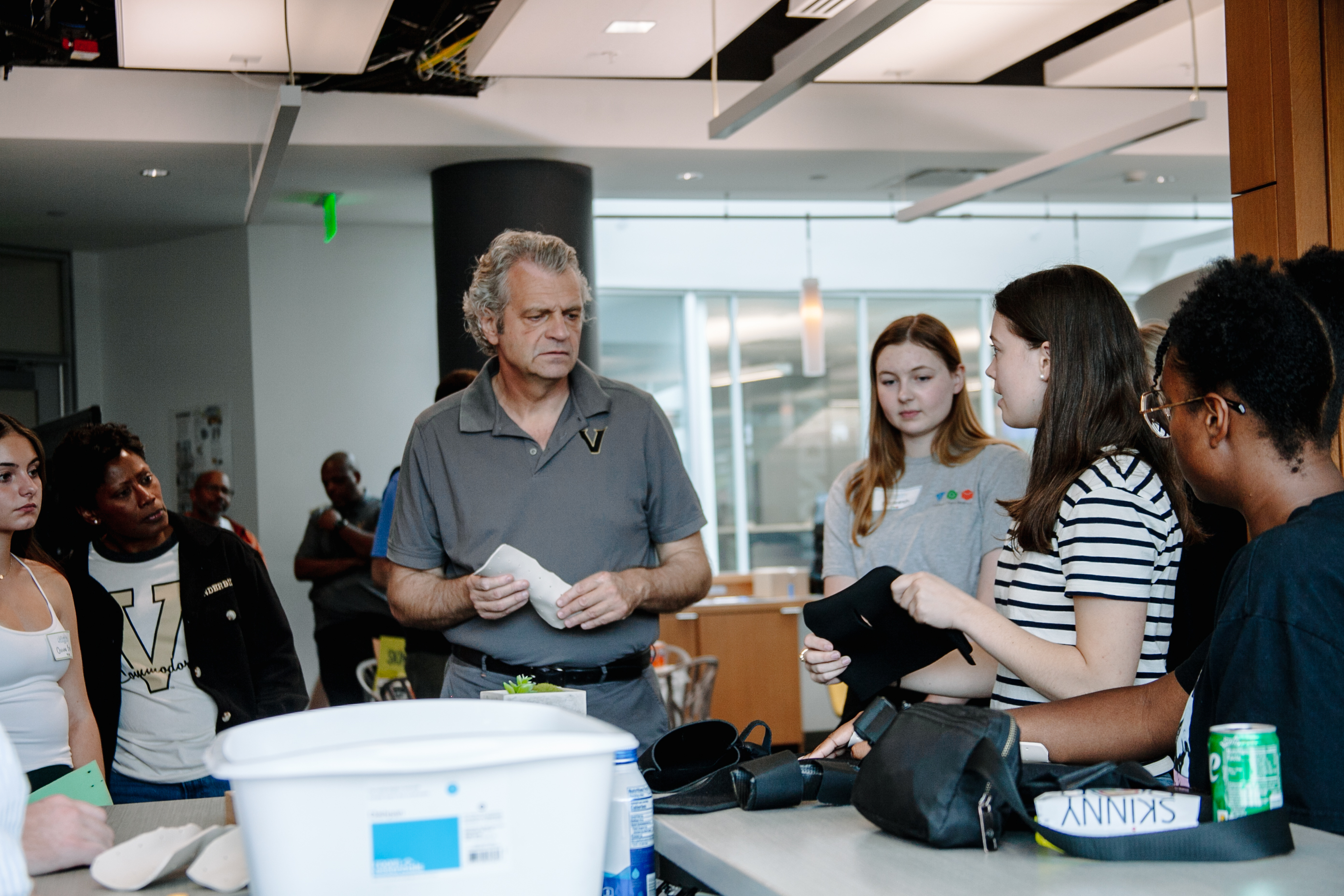
Team 10 - Paige, Heather, & Susan Gray School
Team Lead: Isabella Murano
Paige and Heather are occupational therapists at the Susan Gray School, a preschool that serves children of all abilities. Some children are age-appropriate for sitting upright at a table, but are smaller in stature, making the current seats inaccessible. Paige and Heather needed a small, adjustable chair with various attachments (foot plates, laterals, head rest, etc.) that can be added to support the student while being at a table with their peers.
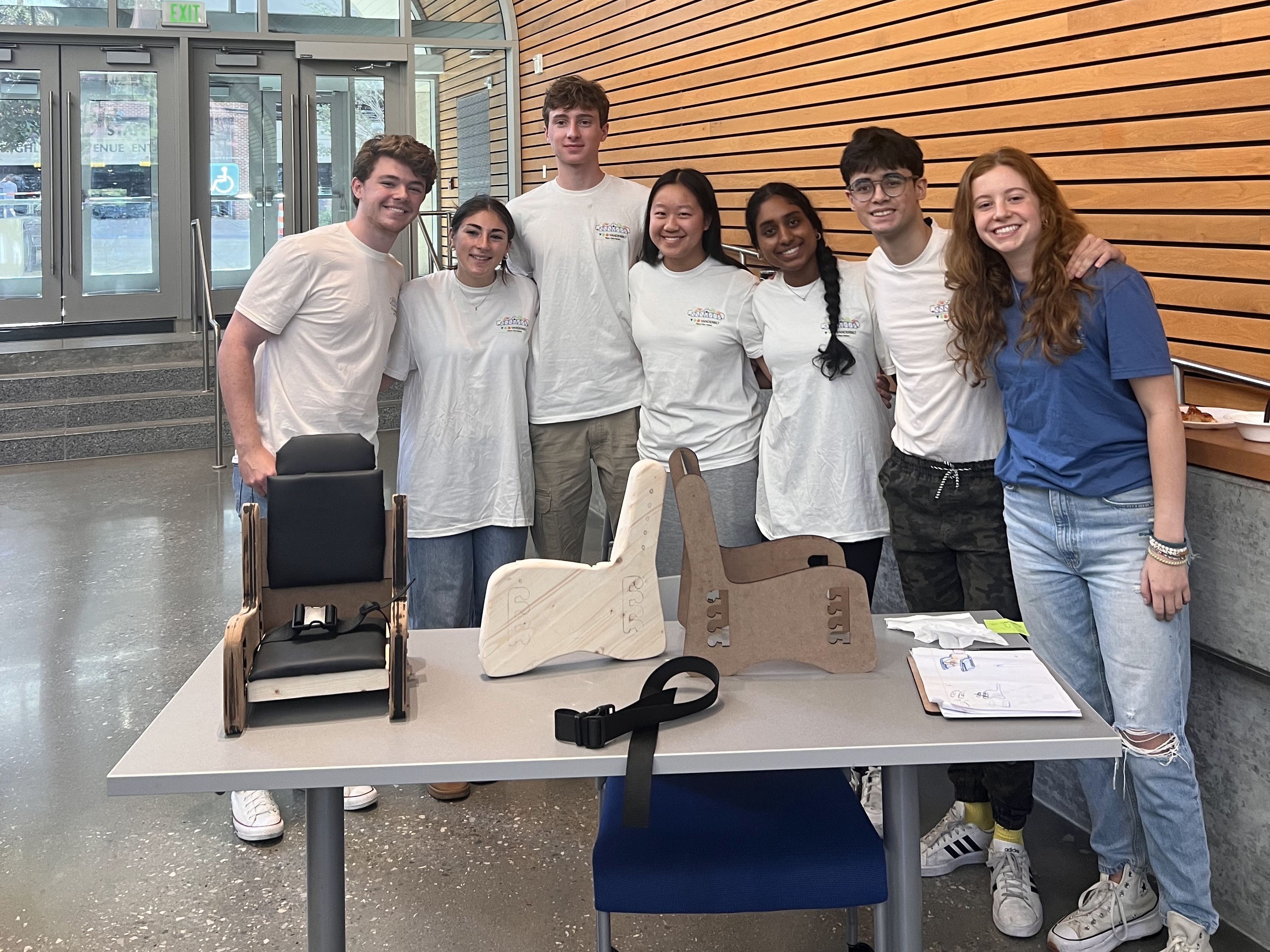
Team 10 created an adjustable laser-cut toddler chair that has an attachable head and lateral supports. This project was continued into the 2025 Global Innovation Challenge. Its documentation can be found here: Adjustable Toddler Chair Documentation.
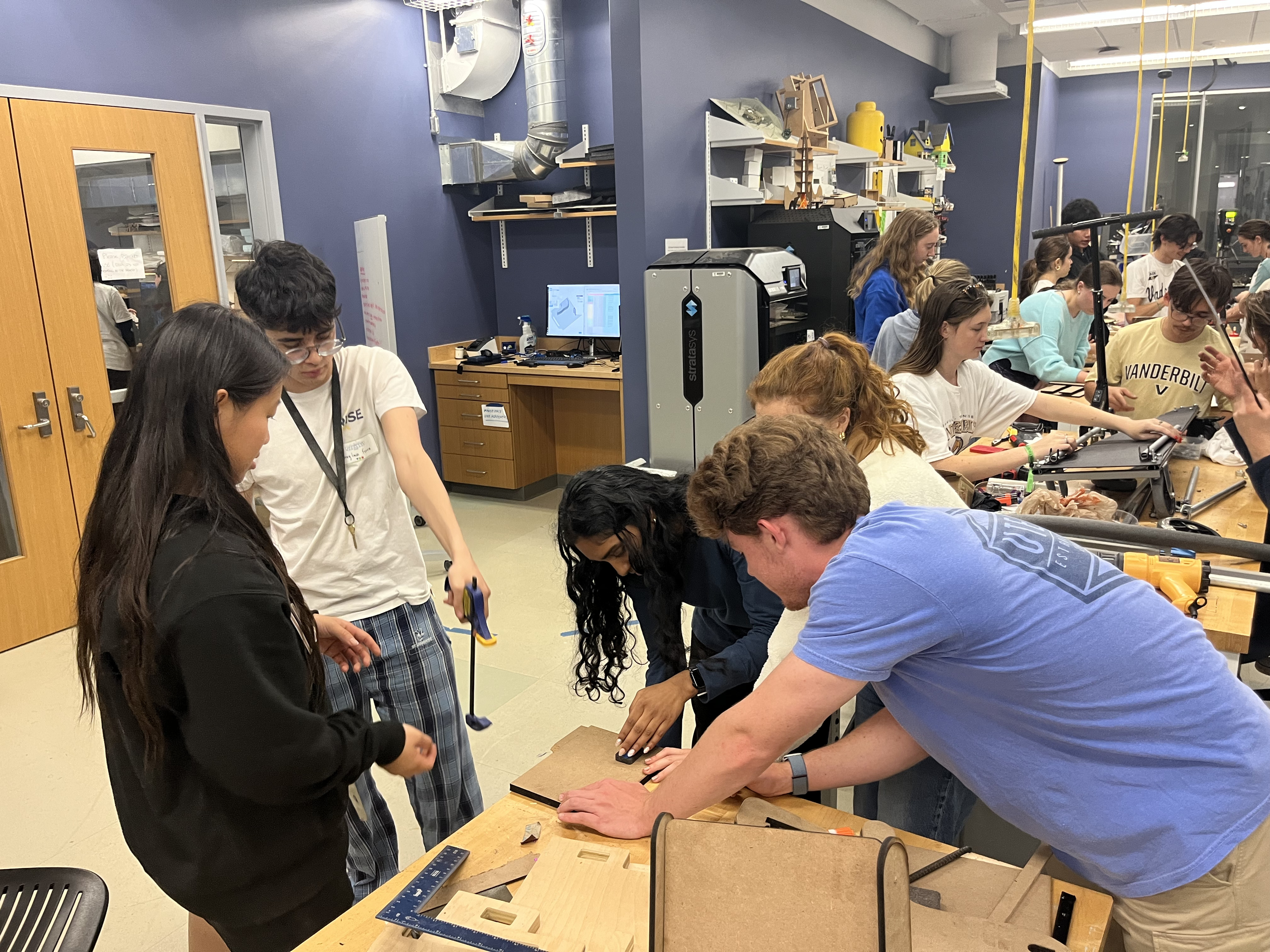
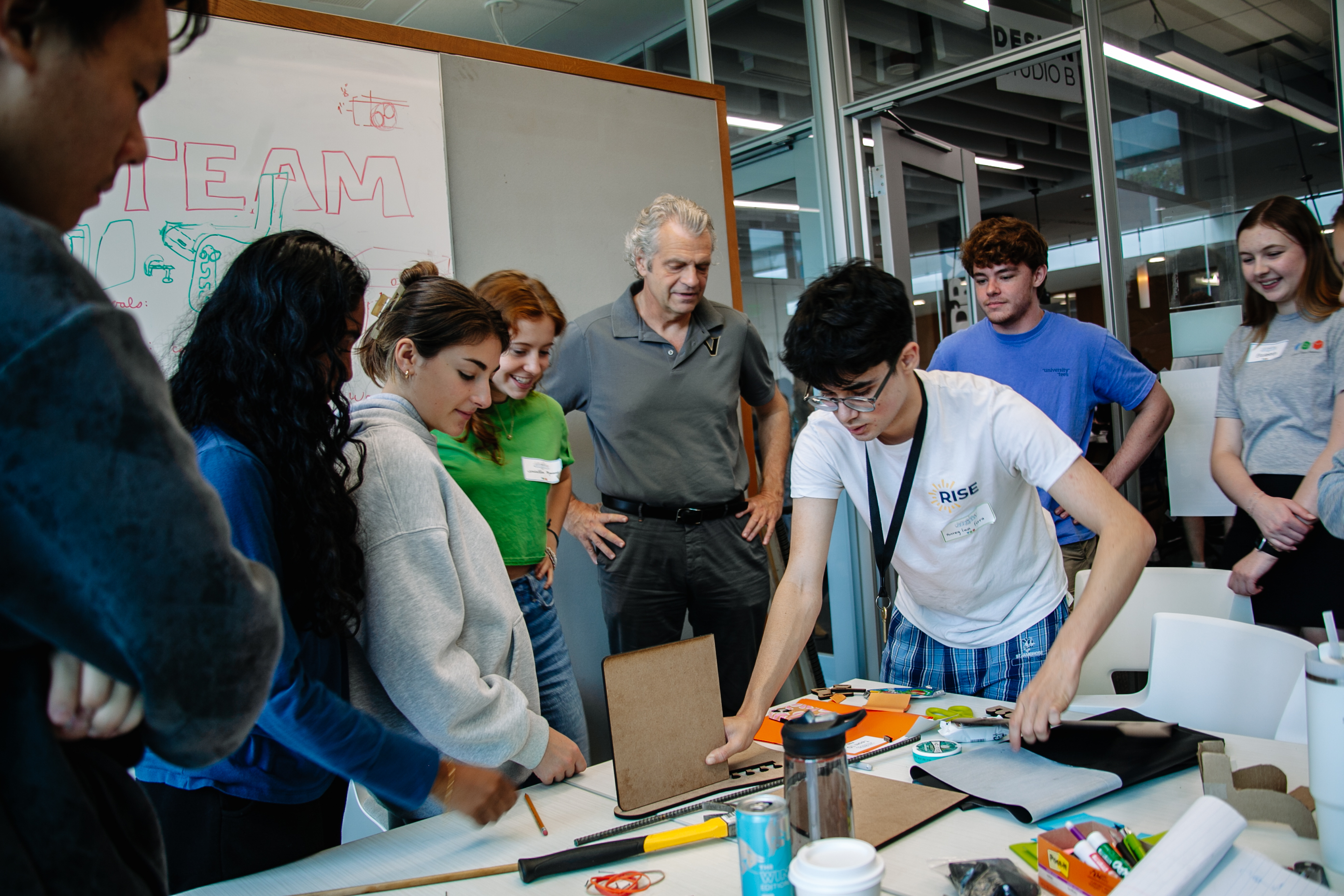
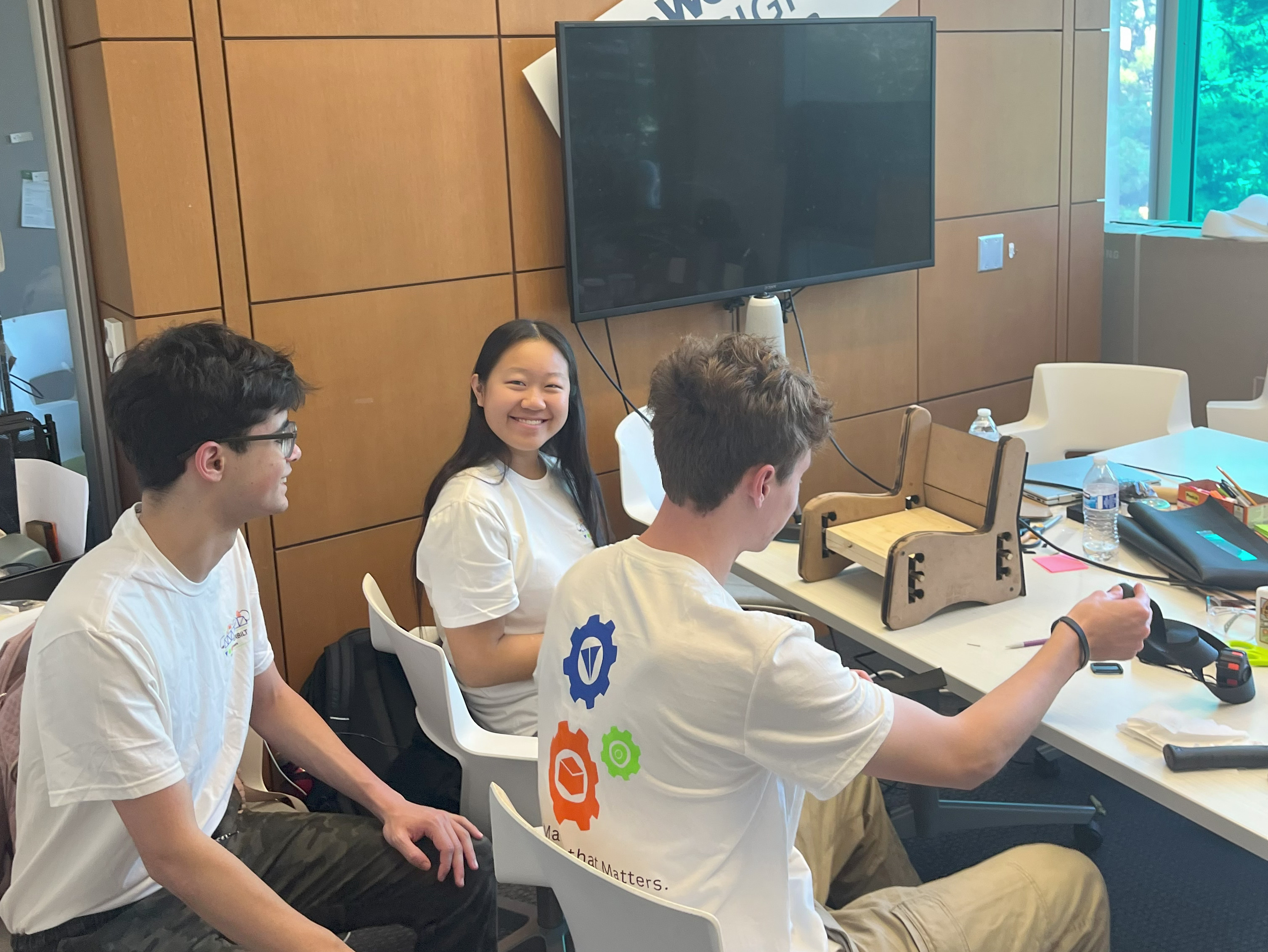
Team 11 - Elise
Team Lead: Hadley Rossignol
Elise, a physical therapist at the Pi Beta Phi Rehabilitation Center, works with patients who have cerebral palsy and other similar conditions. These patients often need help standing up from a seated position. Elise needed a board that patients could strap their feet in and that could be adjusted width-wise.
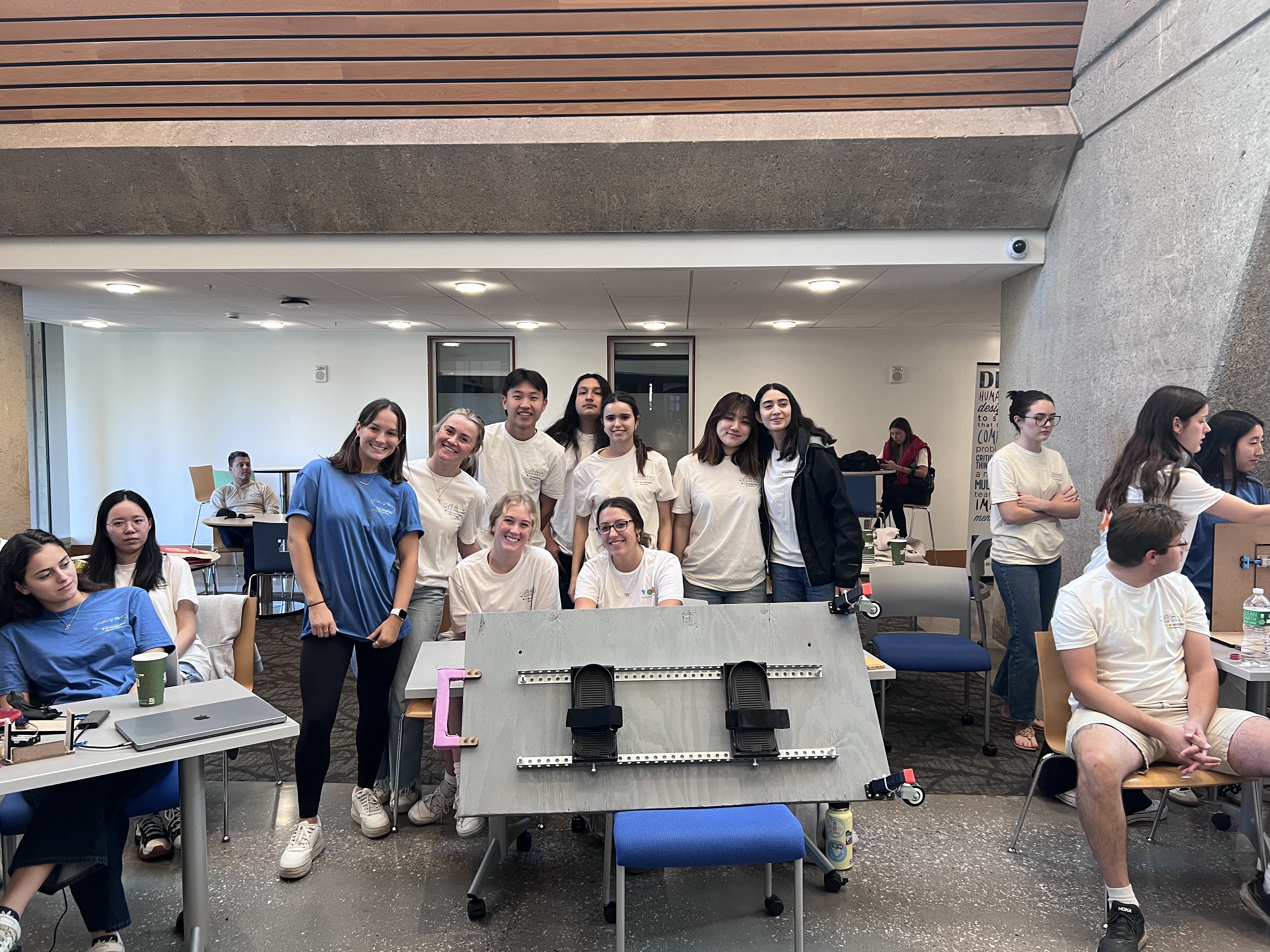
Team 11 created a rolling sit-to-stand board with foot plates patients could strap their feet in. These foot plates could be adjusted laterally to accommodate different stances. The project documentation can be found here: Sit-to-Stand Board Documentation.
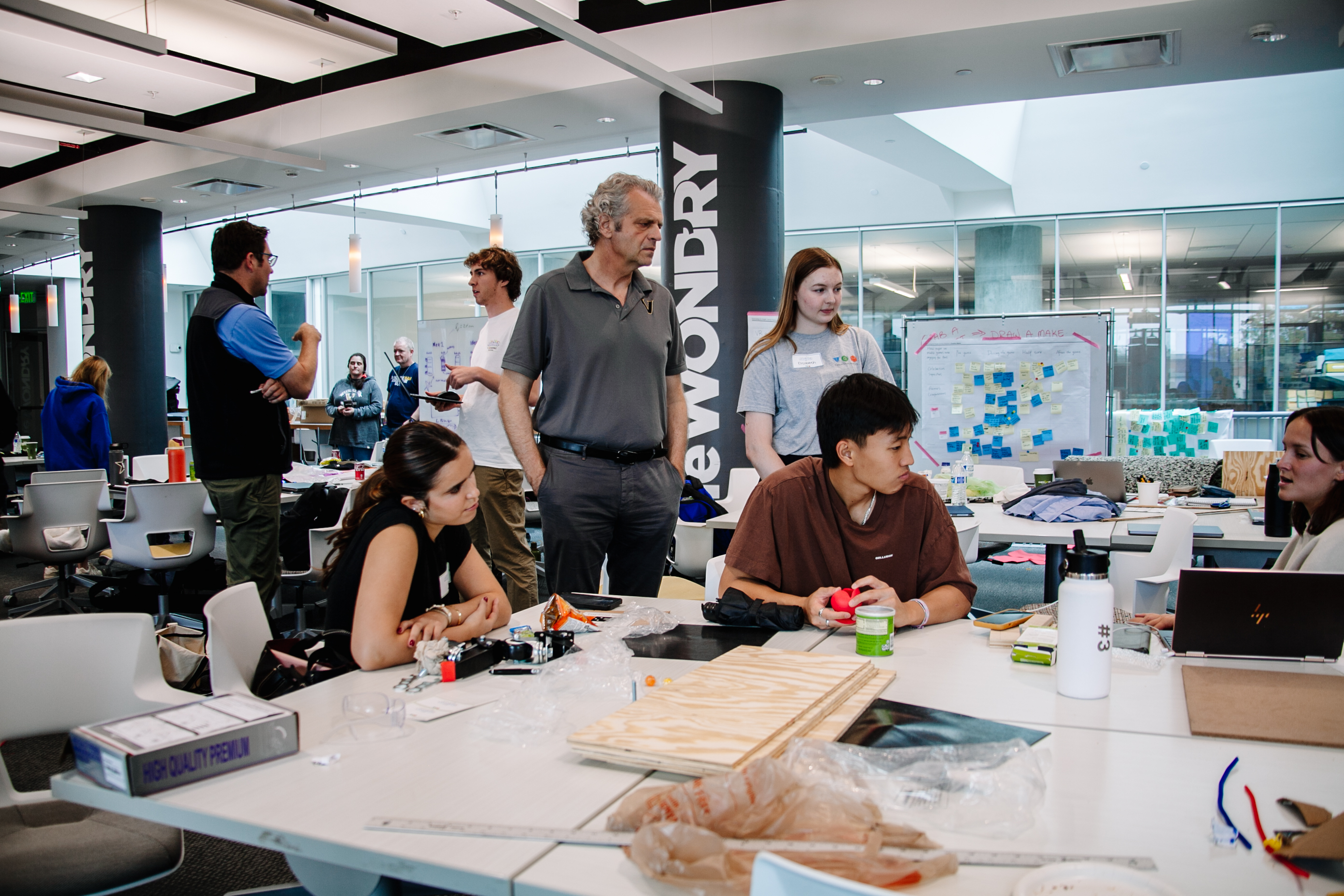
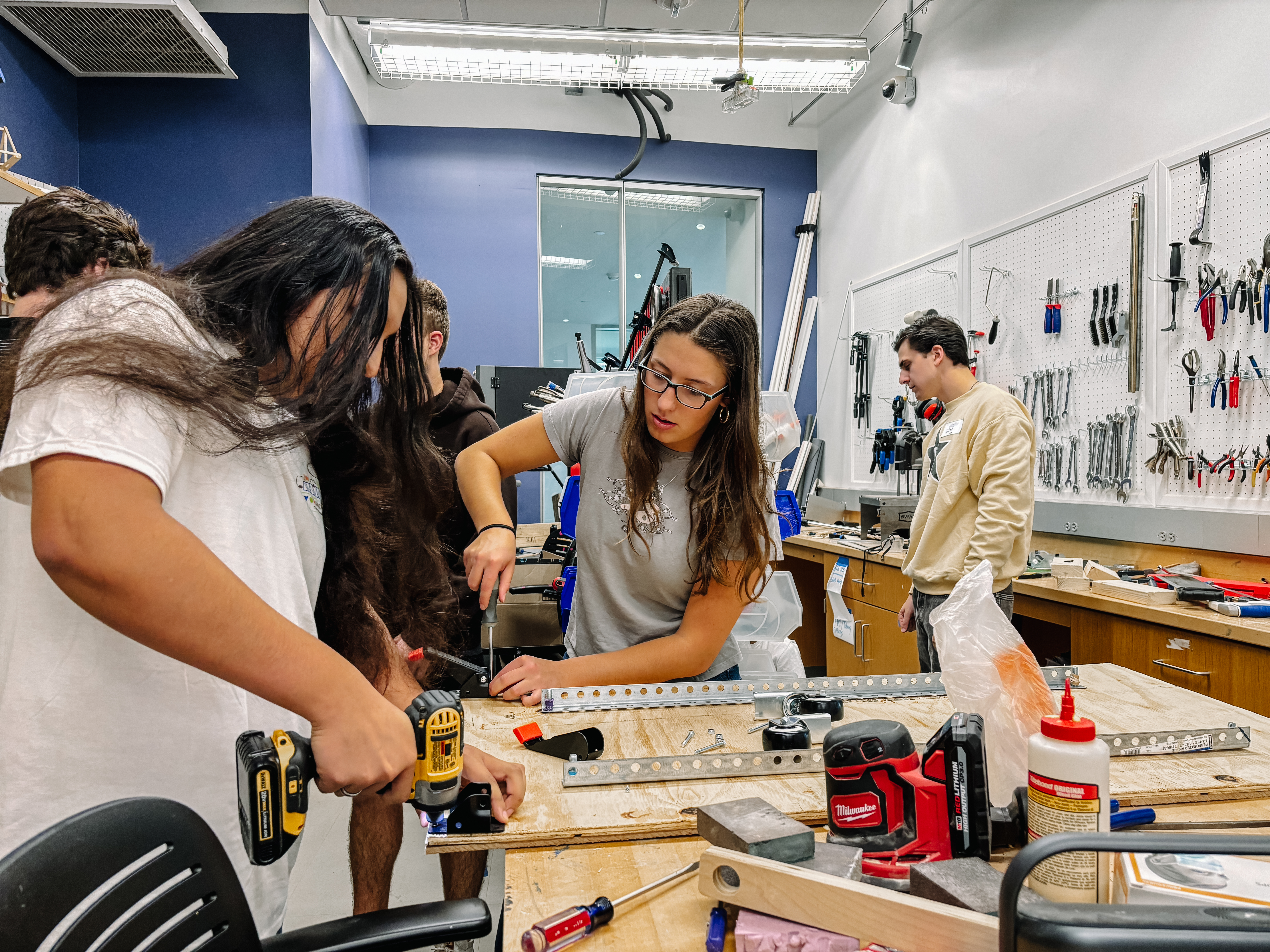
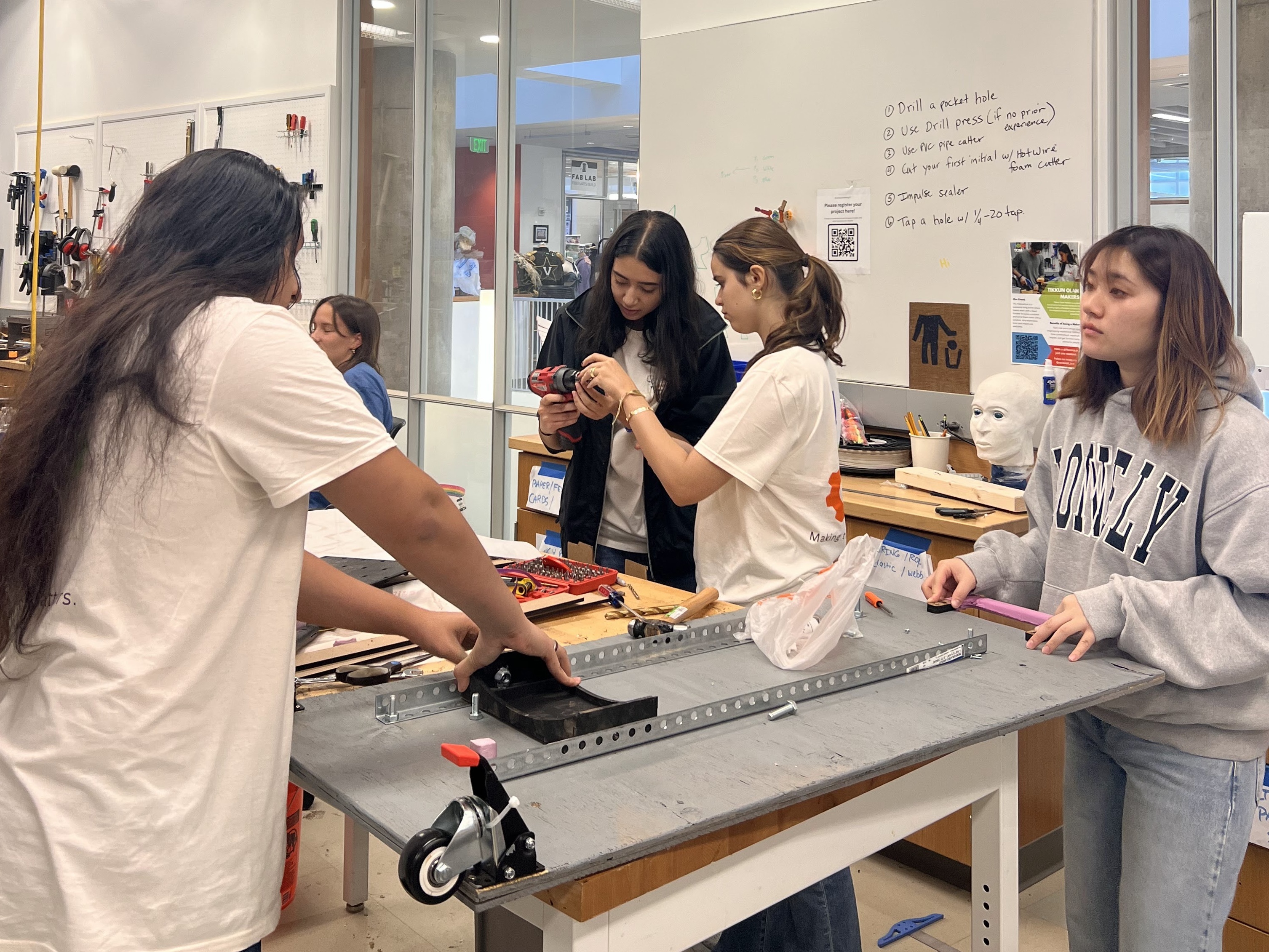
Team 12 - Hugh
Team Lead: Victor Dunagan
Hugh is a 9-year-old with clubbed hands. He is currently unable to ride a bike since he can’t comfortably hold onto the handlebars. He also has a hard time removing and putting back on marker caps when he draws. Lastly, he doesn’t have winter gloves that fit him properly. Hugh needed a bike handlebar adaptation, a marker cap grip, and adapted winter gloves.
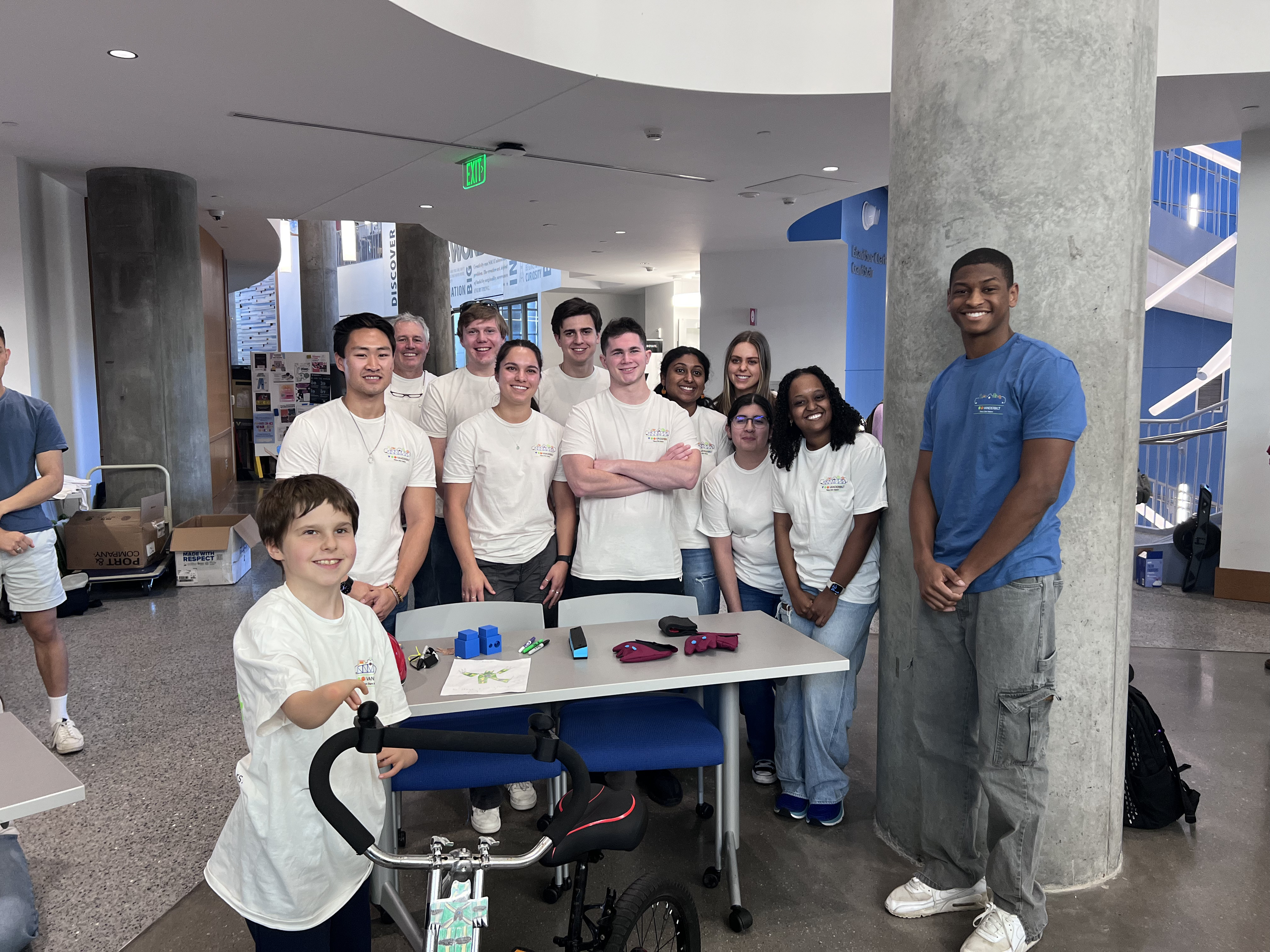
Team 12 3D-printed bike handlebar adaptations that gave Hugh an easier way of holding to the handlebars. They also created two different marker cap grip options that allowed Hugh to remove marker caps using his arms. Lastly, they sewed him custom Star Wars-themed winter gloves that he could put on independently. The marker cap grip project was continued into the 2025 Global Innovation Challenge. The bike handlebar adaptation documentation can be found here: Bike Adaptation Documentation.
